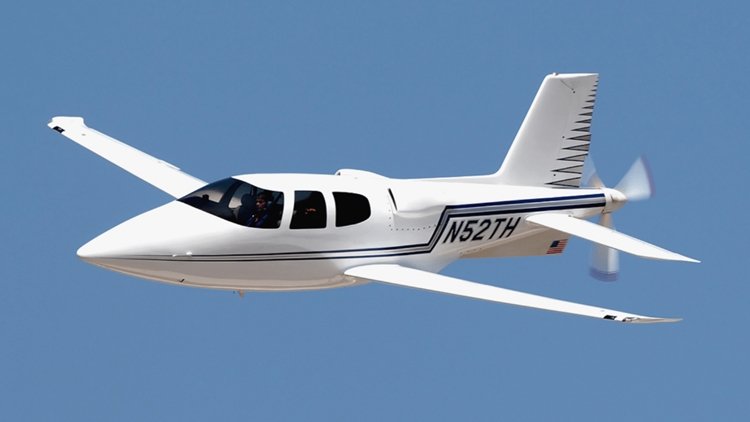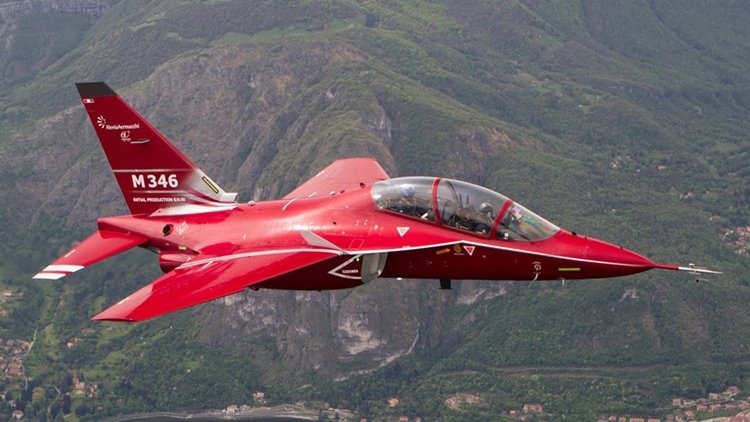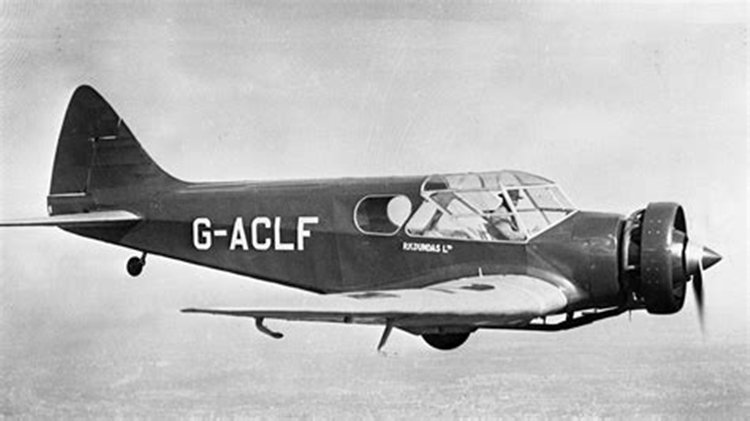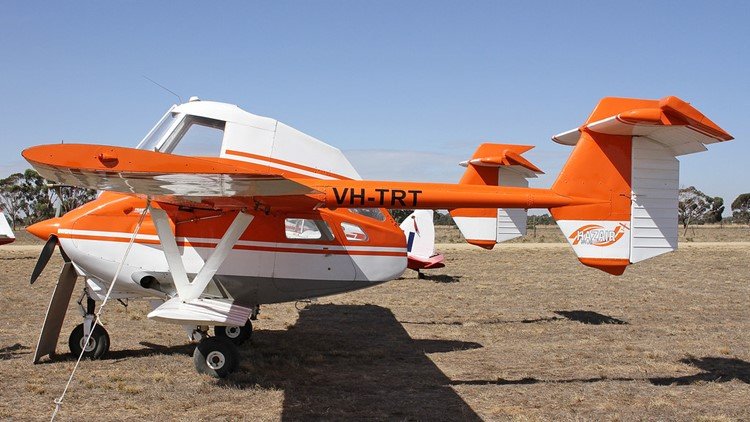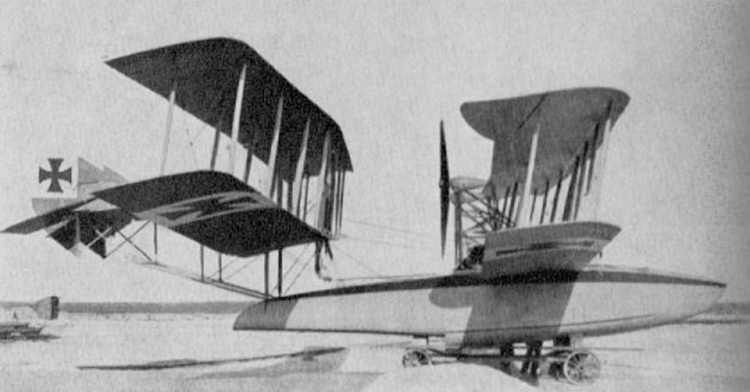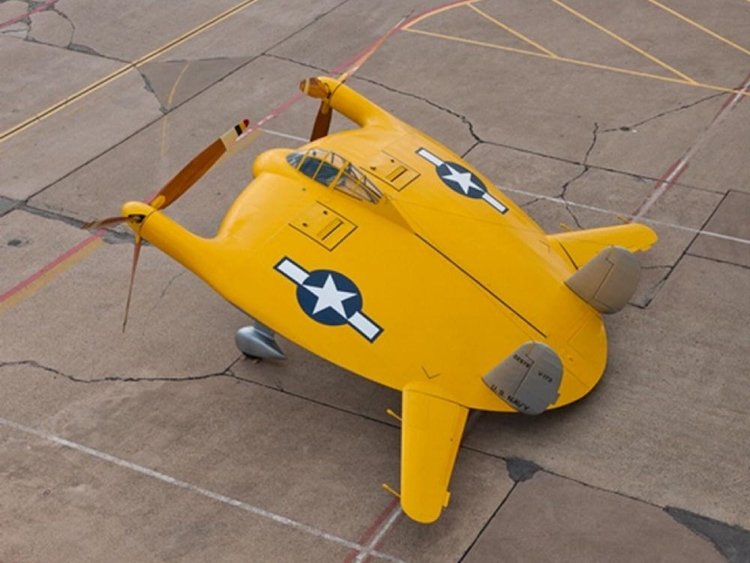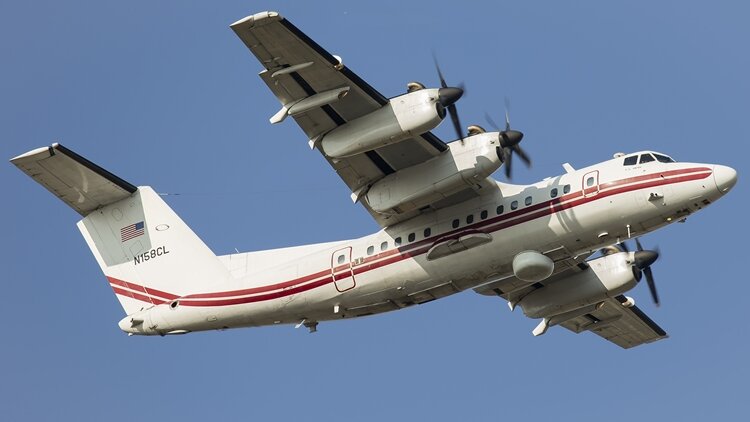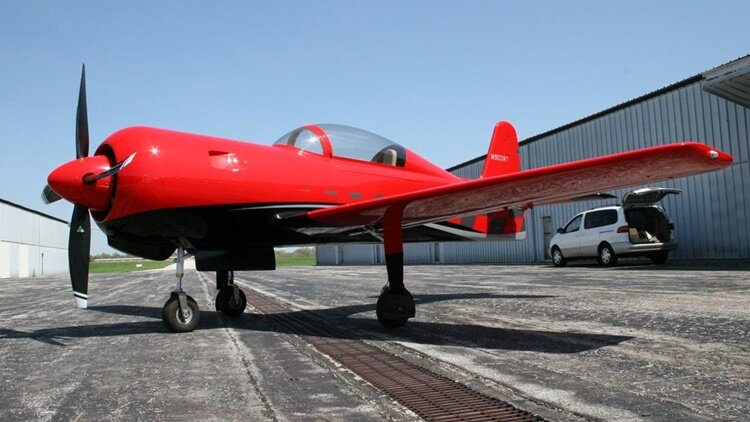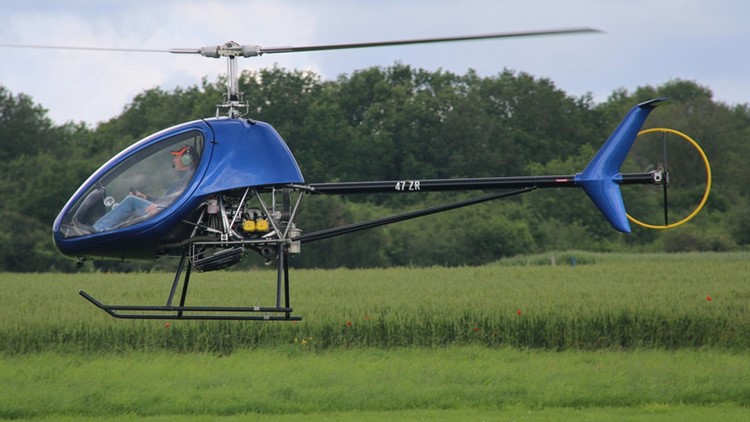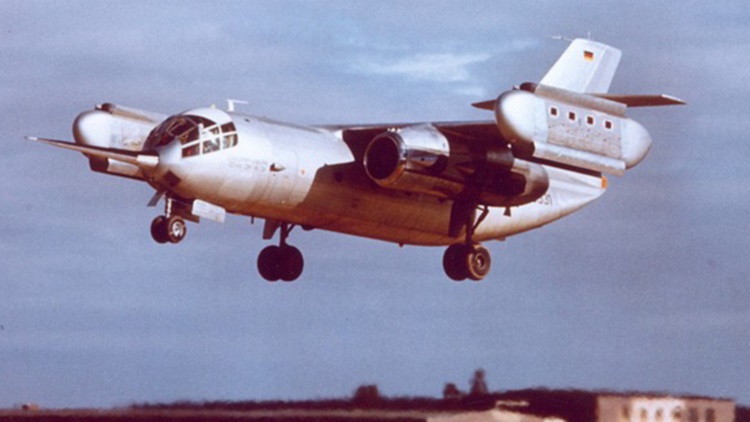Leaderboard
-
in Aircraft
- All areas
- Videos
- Video Comments
- Video Reviews
- Quizzes
- Quiz Comments
- Marker
- Marker Comments
- Books
- Bookshelves Comments
- Bookshelves Reviews
- Bookshelves
- Movies
- Movie Comments
- Movie Reviews
- Aircraft
- Aircraft Comments
- Resources
- Resource Comments
- Tutorials
- Tutorial Comments
- Articles
- Article Comments
- Classifieds
- Classified Comments
- Events
- Event Comments
- Blog Entries
- Blog Comments
- Files
- File Comments
- File Reviews
- Images
- Image Comments
- Albums
- Album Comments
- Topics
- Posts
- Status Updates
- Status Replies
-
All time
-
All time
January 7 2011 - April 4 2025
-
Year
April 4 2024 - April 4 2025
-
Month
March 4 2025 - April 4 2025
-
Week
March 28 2025 - April 4 2025
-
Today
April 4 2025
- Custom Date
-
All time
Popular Content
Showing content with the highest reputation since 07/01/11 in Aircraft
-
The Flaris LAR01 is a Polish five-seat very light jet intended for general aviation use. It is made largely of carbon fiber reinforced polymers and powered by a single turbojet engine – the production version of the LAR01 is to be powered by a single Williams FJ33-5A engine. The LAR01 is intended to be affordable and accessible to individual private owners. Proposed uses for it include air taxi operations, personal transport, emergency medical service and aerial surveillance , as well as its potential modification into an unmanned aerial vehicle (UAV). The LAR01 has been optimized for use by private pilots. Where possible, the cockpit is deliberately designed to mimic that of a traditional car. The designers intend to provide removable. Elliptical wings for the aircraft; this measure is to enable the type to be readily parked within typical garages; sections of the tailplane can be similarly detached for the same purpose. Fuel is housed within a tank mounted on the fuselage, deliberately avoiding the use of the wings for fuel storage. The LAR01 is also reported as being relatively easy to control. Various features for safety and convenience are to be incorporated into the LAR01's design. Unlike many jet-powered aircraft, it is claimed to be readily capable of being operable from unpaved runways and grass strips. For safety purposes, the LAR01 has been designed to use a ballistic rescue parachute system, a parachute being installed within the tail , which is intended to assist in the safe recovery of the aircraft. It can be equipped with various models of Garmin glass cockpit . An electric de-icing system is also fitted. Under 3 mln $ aircraft is forecast to have direct operating costs (fuel, maintenance and insurance) of $450 per hour and have a Garmin G600 TXi flight deck. It should cruise at 430 kn (796 km/h), have a range of 1,900 nm (3,519 km) with a MTOW of 1,500 kg (3,300 lb), and will be able to take off and land on grass airstrips and short runways of less than 250 m (820 ft).4 points
-
The G.46 was a conventional, low-wing monoplane with tailwheel undercarriage, the main units of which retracted inwards. The pilot and instructor sat in tandem under a long canopy. The first prototype, powered by a 205 hp (153 kW) Alfa Romeo 115-Ibis engine, made its maiden flight on 25 June 1947. Testing revealed excellent flying characteristics and suitability for aerobatics, and the type was ordered into production. Apart from the 150 ordered by the Aeronautica Militare, 70 aircraft were exported, to Austria, Argentina and Syria. Variants G.46-1B two-seater with Alfa Romeo 115bis engine, one prototype and initial production of 25 for the Italian Air Force. G.46-2B two-seater with de Havilland Gipsy Queen engine for the Argentine Air Force, 70 built with an additional 12 for the Syrian Air Force. G.46-3B two-seater with Alfa Romeo 115ter engine for the Italian Air Force, 25 built. G.46-4B two-seater with Alfa Romeo 115ter engine for the Italian Air Force, 55 built. G.46-5B two-seat navigation trainer (prototype only) G.46-4A single-seater with Alfa Romeo 115ter engine for the Italian Air Force, 35 built.3 points
-
Mwari is a new light, multirole aircraft being developed by Paramount Group for armed forces across the globe. It is a military variant of the Advanced High Performance Reconnaissance Light Aircraft (AHRLAC). The Mwari project was unveiled in May 2016. Paramount and Boeing made a cooperation agreement in September 2014 for collaborating on specific projects to be implemented in future. The agreement was extended in May 2016 to jointly develop an advanced mission system for the Mwari aircraft. . The cost-effective Mwari multirole aircraft can be deployed in border patrol, counter insurgency missions, forward air control, forward airdrop and resupply, armed reconnaissance, and electronic intelligence (ELINT) and communication intelligence (COMINT) missions. Other mission capabilities will include internal security, disaster management and maritime patrol. Incorporating a twin-boom design, the Mwari aircraft will feature airframe constructed using meal and composite materials. The longitudinal booms at empennage feature a pair of vertical stabilisers joined by a horizontal stabiliser. The high-wing design will improve visibility for the crew, while allowing operations from unprepared airfields. The modular design will also support the integration of different mission systems for a range of military operations. The aircraft will have a length of 10.5m, wing span of 12m and a height of 4m. The maximum take-off weight of the aircraft is 3,800kg and maximum payload capacity with full fuel load will be more than 800kg.3 points
-
The CANT 10 was a flying boat airliner produced in Italy in the 1920s. It was a conventional biplane design with single-bay, unstaggered wings of equal span, having seating for four passengers within the hull, while the pilot sat in an open cockpit. The engine was mounted in pusher configuration in the interplane gap. CANT 10 flying boats were used by Società Italiana Servizi Aerei for over a decade, linking destinations in the Adriatic Sea. Two CANT 10ters were used by a company called TAXI AEREI in Buenos Aires, operating flights from the River Plate. One of them was lost in an accident and the other one was bought by the Paraguayan government for the Naval Aviation in 1929; it was used as a transport during the Chaco War and was withdrawn from use in 1933. A total of 18 CANT 10's were built.3 points
-
Len and Les Alford of Jabiru Aircraft Southern Africa are the South African dealers for Jabiru. They approached Jabiru in 2012 suggesting there was a market for a twin engine Jabiru in Africa. They explained that parts of Africa are best flown over at a great heights, and the prevalence of wild animals and AK47s tends to make flyers nervous about outfield landings. The conclusion…two engines would be nice. The project was always intended to be a joint development and aimed at the South African market. Jabiru had conjured the concept of a twin for some time but could not face up to the complexity generated by hanging the engines off the wings. This would have meant going back to basics on wing structure and all the difficulties of fire-proofing the wings, etc. Another physical difficulty was the engine pods completely obstructed the entry and exit points to the cabin. These considerations gave birth to the idea of mounting the engines on a short canard mounted on the firewall. Some quick calculations on the weight and balance weren’t too frightening and Jabiru was able to get the propellers quite close together to reduce the amount of asymmetric thrust on one engine. The issue of opening the doors against the engine pods was resolved and the design evolved from there. Jabiru’s John Farmer got to work making a streamlined nose for a J430 airplane and the two engine pods. Jabiru’s engineer, Tom Ferguson, was given the task of testing the supporting structure for the engines. As usual, most of the structure was built in composite with aluminum connections to the engines. The firewall structure of the J430 is unchanged and the nose wheel remains in its normal position. This is a relatively simple bolt-on modification. When the structure was finished and the molds were complete, the project was shipped to South Africa where the airplane was completed into a flying prototype. Jabiru is considering releasing the aircraft as a kit for Australian and U.S. builders, and in other countries that accept the experimental category. It’s also possible that it could be released as a conversion to existing experimental J430s in Australia.3 points
-
The Northrop Gamma was a single-engine all-metal monoplane cargo aircraft used in the 1930s. Towards the end of its service life, it was developed into the A-17 light bomber. The Gamma was a further development of the successful Northrop Alpha and shared its predecessor's aerodynamic innovations with wing fillets and multicellular stressed-skin wing construction. Like late Alphas, the fixed landing gear was covered in distinctive aerodynamic spats, and the aircraft introduced a fully enclosed cockpit. The Gamma saw fairly limited civilian service as mail planes with Trans World Airlines but had an illustrious career as a flying laboratory and record-breaking aircraft. The US military found the design sufficiently interesting to encourage Northrop to develop it into what eventually became the Northrop A-17 light attack aircraft. Military versions of the Gamma saw combat with Chinese and Spanish Republican air forces. Twenty Five Gamma 2Es were assembled in China from components provided by Northrop; these were deployed in various attack missions during the early stages of the Second Sino-Japanese War, particular against Imperial Japanese naval assets. In the morning of 11 November 1937, three Chinese Air Force Northrop 2ECs of the 2nd BG, 14th Squadron led by Capt. Yu attacked the IJN fleet aircraft carrier Kaga off the Ma'anshan Islands; the bombs fell wide into Kaga's wake, and the Chinese Gammas were pursued and intercepted by three A5Ms of Kaga's combat air patrol led by flight leader Jirō Chōno, shooting down two (Gammas no. 1405 of Sung I-Ching and Li Xi-Yong, and no. 1402 of Peng Te-Ming and Li Huan-Chieh) while Yu managed to escape into the clouds and return his damaged Gamma to base. On June 2, 1933 Frank Hawks flew his Gamma 2A "Sky Chief" from Los Angeles to New York in a record 13 hours, 26 minutes, and 15 seconds. In 1935, Howard Hughes improved on this time in his modified Gamma 2G making the west-east transcontinental run in 9 hours, 26 minutes, and 10 seconds. The most famous Gamma was the Polar Star. The aircraft was carried via ship and offloaded onto the pack ice in the Ross Sea during Lincoln Ellsworth's 1934 expedition to Antarctica. The Gamma was almost lost when the ice underneath it broke, and had to be returned to the United States for repairs. Polar Star's second assignment to Antarctica in September 1934 was also futile — a connecting rod broke and the aircraft had to be returned yet again for repairs. On January 3, 1935, Ellsworth and pilot Bernt Balchen finally flew over Antarctica. On November 23, 1935, Ellsworth and Canadian pilot Herbert Hollick-Kenyon attempted the world's first trans-Antarctic flight from Dundee Island in the Weddell Sea to Little America. The crew made four stops during their journey, in the process becoming the first people ever to visit Western Antarctica. During one stop, a blizzard completely packed the fuselage with snow which took a day to clear out. On December 5, after traveling over 2,400 miles (3,865 km) the aircraft ran out of fuel just 25 miles (40 km) short of the goal. The intrepid crew took six days to travel the remainder of the journey and stayed in the abandoned Richard E. Byrd camp until being found by the Discovery II research vessel on January 15, 1936. Polar Star was later recovered and donated to the Smithsonian National Air and Space Museum. For details of the 14 variants, click here. Specifications below are for the Gamma 2D variant. Gamma 2A Gamma 2E Gamma 2G Gamm 2J Northrop A-17 derivative3 points
-
The Kyūshū J7W Shinden (震電, "Magnificent Lightning") is a World War II Japanese propeller-driven prototype fighter plane with wings at the rear of the fuselage, a nose-mounted canard, and a pusher engine. Developed by the Imperial Japanese Navy (IJN) as a short-range, land-based interceptor, the J7W was a response to Boeing B-29 Superfortress raids on the Japanese home islands. For interception missions, the J7W was to be armed with four forward-firing 30 mm type 5 cannons in the nose. The Shinden was expected to be a highly maneuverable interceptor, but only two prototypes were finished before the end of the war. A jet engine–powered version was considered, but never reached the drawing board. In the IJN designation system, "J" referred to land-based fighters and "W" to Watanabe Tekkōjo, the company that oversaw the initial design. The idea of a canard-based design originated with Lieutenant Commander Masayoshi Tsuruno, of the technical staff of the IJN in early 1943. Tsuruno believed the design could easily be retrofitted with a turbojet, when suitable engines became available. His ideas were worked out by the First Naval Air Technical Arsenal (Dai-Ichi Kaigun Koku Gijitsusho), which designed three gliders designated Yokosuka MXY6, featuring canards. These were built by Chigasaki Seizo K. K. and one was later fitted with a 22 hp Semi 11 (Ha-90) 4-cylinder air-cooled engine. The feasibility of the canard design was proven by both the powered and unpowered versions of the MXY6 by the end of 1943, and the Navy were so impressed by the flight testing, they instructed the Kyushu Aircraft Company to design a canard interceptor around Tsuruno's concept. Kyushu was chosen because both its design team and production facilities were relatively unburdened, and Tsuruno was chosen to lead a team from Dai-Ichi Kaigun Koku Gijitsusho to aid Kyushu's design works. The construction of the first two prototypes started in earnest by June 1944, stress calculations were finished by January 1945, and the first prototype was completed in April 1945. The 2,130 hp Mitsubishi MK9D (Ha-43) radial engine and its supercharger were installed behind the cockpit and drove a six-bladed propeller via an extension shaft. Engine cooling was to be provided by long, narrow, obliquely mounted intakes on the side of the fuselage. It was this configuration that caused cooling problems while running the engine while it was still on the ground. This, together with the unavailability of some equipment parts postponed the first flight of the Shinden. Even before the first prototype took to the air, the Navy ordered the J7W1 into production, with a quota of 30 Shinden a month given to Kyushu's Zasshonokuma factory and 120 from Nakajima's Handa plant. It was estimated some 1,086 Shinden could be produced between April 1946 and March 1947. On 3 August 1945, the prototype first flew, with Tsuruno at the controls, from Mushiroda Airfield. Two more short flights were made, a total of 45 minutes airborne, one each on the same days as the atomic bombings of Hiroshima and Nagasaki occurred, before the war's end. Flights were successful, but showed a marked torque pull to starboard (due to the powerful engine), some flutter of the propeller blades, and vibration in the extended drive shaft.2 points
-
The Cessna 190 and 195 Businessliner are a family of light single radial engine powered, conventional landing gear equipped, general aviation aircraft which were manufactured by Cessna between 1947 and 1954. The 195 model was also used by the United States Air Force, United States Army, and Army National Guard as a light transport and utility aircraft under the designations LC-126/U-20. The Cessna 190 and 195 were Cessna's only postwar radial-engined aircraft. The first prototype flew in 1945, after the end of World War II and both the 190 and 195 entered production in 1947. The 195 was the first Cessna airplane to be completely constructed of aluminum and features a cantilever wing, similar to the pre-war Cessna 165 from which it is derived. The wing differs from later Cessna light aircraft in that it has a straight taper from root chord to tip chord and no dihedral. The airfoil employed is a NACA 2412, the same as used on the later Cessna 150, 172 and 182. The 190/195 fuselage is large in comparison to other Cessna models because the 42" diameter radial engine had to be accommodated in the nose. There are two rows of seats: two individual seats in the first row, with a comfortable space between them and up to three passengers can be accommodated on a bench seat in the second row. The 190/195 has flat sprung-steel landing gear legs derived from Cessna's purchase of the rights to Steve Wittman's Big X. Many have been equipped with swiveling crosswind landing gear which allows landing with up to 15 degrees of crab. While the crosswind gear simplifies the actual landing, it makes the aircraft difficult to handle on the ground. The 195 is equipped with a retractable step that extends when the cabin door is opened, although some have been modified to make the step a fixed unit. The aircraft was expensive to purchase and operate for private use and Cessna therefore marketed them mainly as a business aircraft under the name "Businessliner". The engines fitted to the 190 and 195 became well known for their oil consumption. The aircraft has a 5-US-gallon (19 L) oil tank, with 2 US gallons (7.6 L) the minimum for flight. Typical oil consumption with steel cylinder barrels is 2 US quarts (1.9 L) per hour. A factory-produced floatplane version was equipped with a triple tail for improved yaw stability. The Cessna 195 produces a cruise true airspeed of 148 knots (274 km/h) (170 MPH) on a fuel consumption of 16 US gallons (61 L) per hour. It can accommodate five people. Including the LC-126s, a total of 1180 190s and 195s were built. The 190 was originally introduced at a price of USD$12,750 in 1947 (equivalent to $173,978 in 2023). When production ended in 1954 the price had risen to USD$24,700 (equivalent to $280,239 in 2023) for the 195B. This compared to USD$3,495 for the Cessna 140 two seater of the same period. Variants The main difference between the 190 and the 195 models was the engine installed. 190 Powered by a Continental W670-23 engine of 240 hp (180 kW) and first certified on 1 July 1947. 195 (Specifications below) Powered by a Jacobs R-755A2 engine of 300 hp (225 kW) and first certified on 12 June 1947. 195A Powered by a Jacobs L-4MB (R-755-9) engine of 245 hp (184 kW) and first certified on 6 January 1950. 195B Powered by a Jacobs R-755B2 engine of 275 hp (206 kW) and first certified on 31 March 1952. It featured flaps increased in area by 50% over earlier models. LC-126A Military designation for the Cessna 195, five-seat communication aircraft for the US Army, it could be fitted with skis or floats, 15 built. LC-126B Similar aircraft to the LC-126 for Air National Guard use, five built. LC-126C Variant of the LC-126A for instrument training/liaison, 63 built. U-20B LC-126B redesignated by the USAF after 1962. U-20C LC-126C redesignated by the USAF after 1962.2 points
-
The Fairchild C-119 Flying Boxcar (Navy and Marine Corps designation R4Q) is an American military transport aircraft developed from the World War II-era Fairchild C-82 Packet, designed to carry cargo, personnel, litter patients, and mechanized equipment, and to drop cargo and troops by parachute. The first C-119 made its initial flight in November 1947, and by the time production ceased in 1955, 1,183 had been built. The Air Force C-119 and Navy R4Q was initially a redesign of the earlier C-82 Packet, built between 1945 and 1948. The Packet had provided limited service to the Air Force's Tactical Air Command and Military Air Transport Service before its design was found to have several serious problems. Though it continued in service until replaced, all of these were addressed in the C-119, which had its first test flight already in 1947. To improve pilot visibility, enlarge the cargo area, and streamline aerodynamics, the C-119 cockpit was moved forward to fit flush with the nose, rather than over the cargo compartment. The correspondingly longer fuselage resulted in more usable cargo space and larger loads than the C-82 could accommodate. The C-119 also got new engines, with 60% more power, four-bladed props to three, and a wider and stronger airframe. The first C-119 prototype (called the XC-82B) made its initial flight in November 1947, with deliveries of C-119Bs from Fairchild's Hagerstown, Maryland factory beginning in December 1949. In 1951, Henry J. Kaiser was awarded a contract to assemble additional C-119s at the Kaiser-Frazer automotive factory located in the former B-24 plant at Willow Run Airport in Belleville, Michigan. Initially, the Kaiser-built C-119F differed from the Fairchild aircraft by the use of Wright R-3350-85 Duplex Cyclone engines in place of Fairchild's use of the Pratt & Whitney R-4360 Wasp Major radial engine. Kaiser built 71 C-119s at Willow Run in 1952 and 1953 (AF Ser. No. 51-8098 to 51-8168) before converting the factory for a planned production of the Chase C-123 that never eventuated. The Kaiser sub-contract was frowned upon by Fairchild, and efforts were made through political channels to stop Kaiser's production, which may have proven successful. Following Kaiser's termination of C-119 production the contract for the C-123 was instead awarded to Fairchild. Most Kaiser-built aircraft were issued to the U.S. Marine Corps as R4Qs, with several later turned over to the South Vietnamese air force in the 1970s, a few others were later shipped to Belgium and Italy. The AC-119G Shadow gunship variant was fitted with four six-barrel 7.62 mm (0.300 in) NATO miniguns, armor plating, flare launchers, and night-capable infrared equipment. Like the AC-130 that replaced it, the AC-119 proved to be a potent weapon. The AC-119 was made more deadly by the introduction of the AC-119K Stinger version, which featured the addition of two General Electric M61 Vulcan 20 mm (0.79 in) cannon, improved avionics, and two underwing-mounted General Electric J85-GE-17 turbojet engines, adding nearly 6,000 lbf (27 kN) of thrust. Other major variants included the EC-119J, used for satellite tracking, and the YC-119H Skyvan prototype, with larger wings and tail. In civilian use, many C-119s feature the "Jet-Pack" modification, which incorporates a 3,400 lbf (15,000 N) Westinghouse J34 turbojet engine in a nacelle above the fuselage. For details of operational history and 21 variants, click here.2 points
-
The Aerocar Mini-IMP (Independently Made Plane) is a light aircraft designed by Moulton Taylor and marketed for homebuilding by Aerocar International. It is a scaled-down derivative of his original Aerocar IMP design. A two-seat version called the Bullet was also built. The Mini-IMP follows the same unconventional layout as its larger predecessor, with a center mounted engine, long driveshaft to a tail propeller, and inverted-V rudder/elevators. The aircraft is available in the form of plans for amateur construction. Following Taylor's death, the plans and licensing for the Mini-IMP have been marketed by the Mini-IMP Aircraft Company of Weatherford, Texas. The aircraft features a cantilever high-wing, a single-seat enclosed cockpit, fixed or retractable tricycle landing gear or conventional landing gear and a single engine in pusher configuration. The aircraft is made from riveted aluminum sheet. Its 24.5 ft (7.5 m) span wing is mounted well behind the pilot and employs a NASA GA(PC)-1 airfoil. The engine is mounted behind the pilot's seat driving the propeller through an extension shaft. Engines used include the 60 to 100 hp (45 to 75 kW) Volkswagen air-cooled engine four-stroke. Taylor claimed the Mini-IMP was not an original design, but an updated version of the 1912 Edson Fessenden Gallaudet Bullet, a design that was capable of 110 mph in the earliest days of flight. In the late 1970s inquiries were made concerning a military version of the Mini-IMP, skinned with Kevlar, armed with two 7.62-millimeter machine guns, and with room in the baggage compartment for a considerable quantity of ammunition. Nothing came of the proposal.2 points
-
(No to be confused with the Curtiss SOC Seagull of WW2) The Curtiss Seagull was a civil variant of the Curtiss MF flying boat trainer produced from 1918, the civil aircraft having a 119 kw (160 hp) Curtiss C.6 six-cylinder in-line engine in place of the V-8 unit in the military variants. The MF was one of a long line of flying boats produced for the US services following the entry of the United States into World War I, when flying boats were required for patrolling coastal waters to prevent German submarine operations. Two examples of the Seagull came to Australia. Seagull G-AUCV (c/ n MF.419/28) was registered in 1921. It left Double Bay, Sydney, NSW on 13 March 1921 and made an epic flight to and from Tasmania, this being described as the First Aerial Reconnaissance in Australia, the pilot being Capt Andrew Lang(said to be shot down by the Red Baron during World War I, the operation being financed and promoted by Lebbeus Hordern. Cameras were carried on board in order that aerial photographs could be taken of the coastline. The auxiliary yacht ‘Acielle’ accompanied the expedition and acted as a tender for the Seagull. The flight was made in short stages, the first night being at the Shoalhaven River, near Nowra, NSW, thence to Jervis Bay, Moruya, down the coast to Eden and Marlo where the Victorian Premier, Mr Lawson, was met. Later he was taken for a flight over the area. Stops were made and local flights were made with passengers. From Welshpool it flew to Lady Barren and then across the Tasman, landing on the Tamar River close to Cataract Gorge. The return flight commenced on 19 June and the aircraft arrived at Double Bay on 4 July 1921. The bottom photo below shows the aircraft on the Tamar River. For more details of these aircraft click here.2 points
-
The Fairey Barracuda was a British carrier-borne torpedo and dive bomber designed by Fairey Aviation. It was the first aircraft of this type operated by the Royal Navy's Fleet Air Arm (FAA) to be fabricated entirely from metal. The Barracuda was developed as a replacement for the Fairey Albacore biplanes. Development was protracted due to the original powerplant intended for the type, the Rolls-Royce Exe, being cancelled. It was replaced by the less powerful Rolls-Royce Merlin engine. On 7 December 1940, the first Fairey prototype conducted its maiden flight. Early testing revealed it to be somewhat underpowered. However, the definitive Barracuda Mk II had a more powerful model of the Merlin engine, while later versions were powered by the larger and even more powerful Rolls-Royce Griffon engine. The type was ordered in bulk to equip the FAA. In addition to Fairey's own production line, Barracudas were also built by Blackburn Aircraft, Boulton Paul, and Westland Aircraft. The type participated in numerous carrier operations during the conflict, being deployed in the Atlantic Ocean, Mediterranean Sea, and the Pacific Ocean against the Germans, Italians, and Japanese respectively during the latter half of the war. One of the Barracuda's most noteworthy engagements was a large-scale attack upon the German battleship Tirpitz on 3 April 1944. In addition to the FAA, the Barracuda was also used by the Royal Air Force, the Royal Canadian Navy, the Dutch Naval Aviation Service and the French Air Force. After its withdrawal from service during the 1950s, no intact examples of the Barracuda were preserved despite its once-large numbers, although the Fleet Air Arm Museum has ambitions to assemble a full reproduction. a total of 2602 Barracudas were built. For details of development and operational history, click here. Variants Barracuda Two prototypes (serial numbers P1767 and P1770) based on the Fairey Type 100 design. Mk I First production version, Rolls-Royce Merlin 30 engine with 1,260 hp (940 kW), 30 built Mk II Upgraded Merlin 32 engine with 1,640 hp (1,225 kW), four-bladed propeller, ASV II radar, 1,688 built Mk III Anti-submarine warfare version of Mk II with ASV III radar in a blister under rear fuselage, 852 built Mk IV Mk II (number P9976) fitted with a Rolls-Royce Griffon engine with 1,850 hp (1,380 kW), first flight 11 November 1944, abandoned in favour of Fairey Spearfish. Mk V Griffon 37 engine with 2,020 hp (1,510 kW), payload increased to 2,000 lb (910 kg), ASH radar under the left wing, revised tailfin, 37 built.2 points
-
The Blohm & Voss BV 138 Seedrache (Sea Dragon), but nicknamed Der Fliegende Holzschuh ("flying clog", from the side-view shape of its fuselage, as well as a play on the title of the Wagner opera 'Der fliegende Holländer' or 'The Flying Dutchman') was a World War II German trimotor flying boat that served as the Luftwaffe's main seaborne long-range maritime patrol and naval reconnaissance aircraft. A total of 297 BV 138s were built between 1938 and 1943. Originally developed under the company name of Hamburger Flugzeugbau, the type was initially designated the Ha 138. Its appearance was unique in its combination of unusual design features with its twin boom tail unit, short fuselage and trimotor engine configuration. The short hull, with its hydrodynamic step beneath and flat sides, earned it the nickname, "Fliegender Holzschuh" (the flying clog). The booms of the twin tail unit, much like the smaller Focke-Wulf Fw 189 twin-engined reconnaissance monoplane, extended horizontally from the rear of the outer engine nacelles. For hydrodynamic reasons, the hull featured a distinct "turn-down", or "beak" at the stern. The first prototype featured a gull wing, but during the first flight it was discovered that this wing could not generate enough lift, so the concept was abandoned on the second prototype. The airplanes had also a hardpoint for catapult launches from seaplane tenders. Three piston engines were used. The central engine was mounted above the wing, while the wing engines were lower. The pre-production prototypes and the BV 138 A-01 to BV 138 A-06, were powered by various makes of engines ranging from 485 to 746 kW (650–1,000 hp). The first standardized version, BV 138 B-1, was powered by three 880 PS (868 hp, 647 kW) Junkers Jumo 205D two-stroke, opposed-piston aircraft diesel engines. The engine cowlings also had an atypical appearance, due to the unique nature of the vertical orientation of the six-cylinder opposed-piston Jumo 205 diesel engines, and resembled the cowlings of 4 or 6-cylinder inverted inline engines found on smaller civil and utility aircraft from the Jumo 205's propshaft placement, emerging forward at the uppermost front end of the powerplant. The choice for diesel engines made it possible to refuel at sea from U-boats, who also use diesel engines. When refuelling at sea, the airplane had to be fitted with a fuel filter as diesel fuel from ships contains some condensation. Originally developed under the company name of Hamburger Flugzeugbau, the type was initially designated the Ha 138. Its appearance was unique in its combination of unusual design features with its twin boom tail unit, short fuselage and trimotor engine configuration. The short hull, with its hydrodynamic step beneath and flat sides, earned it the nickname, "Fliegender Holzschuh" (the flying clog). The booms of the twin tail unit, much like the smaller Focke-Wulf Fw 189 twin-engined reconnaissance monoplane, extended horizontally from the rear of the outer engine nacelles. For hydrodynamic reasons, the hull featured a distinct "turn-down", or "beak" at the stern. The first prototype featured a gull wing, but during the first flight it was discovered that this wing could not generate enough lift, so the concept was abandoned on the second prototype. The airplanes had also a hardpoint for catapult launches from seaplane tenders. BV 138 being prepared for catapult launch on the aircraft tender Friesenland. Three piston engines were used. The central engine was mounted above the wing, while the wing engines were lower. The pre-production prototypes and the BV 138 A-01 to BV 138 A-06, were powered by various makes of engines ranging from 485 to 746 kW (650–1,000 hp). The first standardized version, BV 138 B-1, was powered by three 880 PS (868 hp, 647 kW) Junkers Jumo 205D two-stroke, opposed-piston aircraft diesel engines. The engine cowlings also had an atypical appearance, due to the unique nature of the vertical orientation of the six-cylinder opposed-piston Jumo 205 diesel engines, and resembled the cowlings of 4 or 6-cylinder inverted inline engines found on smaller civil and utility aircraft from the Jumo 205's propshaft placement, emerging forward at the uppermost front end of the powerplant. The choice for diesel engines made it possible to refuel at sea from U-boats, who also use diesel engines. When refuelling at sea, the airplane had to be fitted with a fuel filter as diesel fuel from ships contains some condensation. There were three gun positions on the aircraft: there was one on the bow with an enclosed, powered gun turret with a single MG 151/20 autocannon. On the stern the fields of fire were obstructed by the tail with the horizontal stabilizer, so there was one gun position lower on the fuselage and a second one higher just behind the central top engine. The gun position behind the central engine, which could see over the horizontal stabilizer, was a fully open Scarff ring-like emplacement which could mount a 7.92 mm MG 15 machine gun, but most aircraft mounted a 13 mm MG 131 heavy machine gun. The lower gun position at the rear fuselage sighted below the horizontal stabilizer. It too was left open and equipped with a machine gun on early aircraft, however later most aircraft mounted an enclosed powered turret similar to the one on the bow. For operational history and variants, click here.2 points
-
The Bellanca Aircruiser and Airbus were high-wing, single-engine aircraft built by Bellanca Aircraft Corporation of New Castle, Delaware. The aircraft was built as a "workhorse" intended for use as a passenger or cargo aircraft. It was available with wheels, floats or skis. The aircraft was powered by either a Wright Cyclone or Pratt and Whitney Hornet engine. The Airbus and Aircruiser served as both commercial and military transports. The first Bellanca Airbus was built in 1930 as the P-100. An efficient design, it was capable of carrying 12 to 14 passengers depending on the cabin interior configuration, with later versions carrying up to 15. In 1931, test pilot George Haldeman flew the P-100 a distance of 4,400 miles in a time aloft of 35 hours. Although efficient, with a cost per mile figure of eight cents per mile calculated for that flight, the first Airbus did not sell due to its water-cooled engine. The next model, the P-200 Airbus, was powered by a larger, more reliable air-cooled engine. One version (P-200-A) came with floats and operated as a ferry service in New York City, flying between Wall Street and the East River. Other versions included a P-200 Deluxe model, with custom interiors and seating for nine. The P-300 was designed to carry 15 passengers. The final model, the "Aircruiser," was the most efficient aircraft of its day, and would rank high amongst all aircraft designs. With a Wright Cyclone air-cooled supercharged radial engine rated at 715 hp, the Aircruiser could carry a useful load greater than its empty weight. In the mid-1930s, the Aircruiser could carry 4,000 lb payloads at a speed of between 145 and 155 mph, a performance that multi-engine Fokkers and Ford Trimotors could not come close to matching. In 1934, United States federal regulations prohibited single-engine transports on United States airlines, virtually eliminating future markets for the Aircruiser. Where the workhorse capabilities of the Aircruiser stood out was in Canada. Several of "The Flying Ws", as it was commonly dubbed in Canada, were used in northern mining operations, ferrying ore, supplies and the occasional passenger, into the 1970s. Variants Airbus Bellanca P Commercial version of Bellanca K, powered by a 500 hp (370 kW) Pratt & Whitney R-1860 Hornet.[2] P-100 Airbus 14-passenger monoplane powered by a 600 hp (450 kW) Curtiss Conqueror engine, one built, later converted into a P-200. P-200 Airbus 12-passenger monoplane, nine built and one converted from P-100. P-300 Airbus 15-seater monoplane powered by a Wright R-1820 Cyclone engine. Y1C-27 United States Army Air Corps designation for four P-200 Airbuses powered by 550 hp (410 kW) Pratt & Whitney R-1860 Hornet B engine. All later converted to C-27C. C-27A Airbus Production version of the Y1C-27 powered by a 650 hp (480 kW) Pratt & Whitney R-1860 Hornet B engine, ten built. One converted to a C-27B the rest converted to C-27Cs. C-27B Airbus One C-27A re-engined with a 675 hp (503 kW) Wright R-1820-17 Cyclone engine. C-27C Airbus Four Y1C-27s and nine of the C-27A re-engined with a 750 hp (560 kW) Wright R-1820-25 Cyclone engine. Aircruiser Aircruiser 66-67 Improved structure modified from a P-200 with a 675 hp (503 kW) Wright SR-1820 Cyclone engine Aircruiser 66-70 (Specifications below) An Aircruiser with a 710 hp (530 kW) Wright SGR-1820 Cyclone engine, five built - exported to Canada. Aircruiser 66-75 An Aircruiser with a 730 hp (540 kW) Wright Cyclone engine, three built. Aircruiser 66-76 A cargo-version of the Aircruiser with a 760 hp (570 kW) Wright Cyclone. Aircruiser 66-80 An Aircruiser with an 850 hp (630 kW) Wright Cyclone engine.2 points
-
The Sukhoi Su-17 (izdeliye S-32) is a variable-sweep wing fighter-bomber developed for the Soviet military. Its NATO reporting name is "Fitter". Developed from the Sukhoi Su-7, the Su-17 was the first variable-sweep wing aircraft to enter Soviet service and was featured updated avionics. The aircraft also has variants which were designed to be exported to non-Soviet states such as the Sukhoi Su-22 and the less popular Su-20. It was produced from 1967-1990. The Su-17/20/22 series had a long career and has been operated by many air forces, including those of the Russian Federation, former Soviet republics, former Warsaw Pact, countries in the Arab world, Angola, and Peru. The Russian Federation retired its fleet in 1998. Although the Su-17 was capable of carrying nuclear weapons, it was used in roles ranging from close-air support to ground attack. Shortly after the Su-7 fighter-bomber was put into service, the Sukhoi Design Bureau was ordered to develop a modernization program. The program would be aimed primarily at updating on-board avionics and takeoff/landing characteristics. The concept of variable-geometry wings - something gaining wider attention at that time - was adopted. The program was to be led by Sukhoi's head designer, Nikolay Zyrin. In 1963 the Sukhoi OKB with input from TsAGI created a variable-sweep wing technology demonstrator. The S-22I (also known as the Su-7IG, NATO designation "Fitter-B"), converted from a production Su-7BM, had fixed inner portions of the wing with movable outer segments that could be swept to 28°, 45°, or 62°. The S-22I first took off (with Vladimir Ilyushin at the controls) on 2 August 1966. It was later demonstrated at the air parade in Domodedovo in July 1967. Flight testing revealed that the configuration improved both take-off/landing characteristics, range and endurance. Handling was generally better than the fixed wing Su-7, with the exception that buffeting at high angles of attack to warn of imminent stall no longer occurred. For further details of the deveopment, operational history and variants of the series, click here. The photos on this page feature the Su-22 of the Polish Air Force, and the specifications below are for the Su-17M4.2 points
-
The Rolls Royce Merlin was the beating heart of any number of WWII military aircraft - and would you believe that it powered the Cromwell Cruiser tank? This link is to a lecture given by one of the developers of teh Merlin engine to de Haviland technical people in late 1945. I post it here in order to preserve it. http://www.wwiiaircraftperformance.org/merlin-lovesey.pdf The Rolls Royce Merlin fitted in a Spitfire Just some of the aircraft powered by Rolls Royce Merlin engines. Avro Lancaster Hawker Hurricane Supermarine Spitfire CAC CA-18 Mustang2 points
-
The Doak VZ-4 (or Doak Model 16) was an American prototype Vertical Takeoff and Landing (VTOL) aircraft built in the 1950s for service in the United States Army. Only a single prototype was built, and the U.S. Army withdrew it from active trials in 1963. Edmund R. Doak, Jr., a self-taught engineer and vice president of Douglas Aircraft Company, founded Doak Aircraft Company in Torrance, California, in 1940. The company grew to 4,000 employees during World War II, with subcontracts from every major American aircraft manufacturer. These included molded plywood fuselages for trainers such as the AT-6 and Vultee BT-13, and doors, hatches and gun turrets for a multitude of aircraft. Doak proposed a VTOL aircraft to the U.S. Army's Army Transportation and Research and Engineering Command at Fort Eustis in Newport News, Virginia, in 1950. He touted the aircraft as able to take off and land in a small area, hover and loiter over a target area, and fly backwards like a helicopter without the noise and vibration of a helicopter, while also having the horizontal cruising ability, high speed, wing-mounted weapons, and mission flexibility of a conventional fixed-wing fighter aircraft. Knowing that a Soviet attack on airbases would interdict takeoffs and landings by conventional aircraft, the Army found Doak's proposal attractive, and on 10 April 1956, it awarded Doak a contract to produce a single prototype for use as a research aircraft. The aircraft, designated the Doak Model 16 by the Doak company and assigned the serial number 56-9642, was originally powered by an 840 shp (630 kW) Lycoming YT53 turboprop engine mounted in the fuselage, later replaced by a 1,000 shp (750 kW) Lycoming T53-L-1 turbine. The engine drove two wingtip-mounted fiberglass tilting ducted fan propellers through a "T" box on the engine that transmitted power to the propellers via a 4-inch (102-mm) aluminum tubular shaft and two smaller shafts. Each propeller was 48-inch (1.22-meter) in diameter and the duct outer diameter was 60-inches (1.52-meter)). The fans were positioned vertically for takeoff and landing – with a rotation speed of 4,800 rpm required for liftoff – and rotated to a horizontal orientation for horizontal flight, the first time this VTOL propulsion concept was tested successfully. The aircraft had metal wings and a metal tail. To save weight, the aircraft originally was constructed of uncovered welded steel tubing, but after it was found that the open frame interfered with forward-speed tests, molded fiberglass was installed over its nose section and thin aluminum sheeting over its aft fuselage. It accommodated a two-person crew, with a pilot and observer seated in tandem in the cockpit. The pilot used a standard stick and rudder to control the aircraft. Its landing gear were taken from a Cessna 182 Skylane, its seats from a North American P-51 Mustang, and its duct actuators from a Lockheed T-33 Shooting Star. Flight testing began at Torrance Municipal Airport, and Doak completed several tests by 1958. The Model 16 hovered for the first time on 25 February 1958, and the first transition from vertical to horizontal flight (and back again) took place on 5 May 1958. Although the prototype generally was successful, its short takeoff and landing performance was less than hoped for and it displayed a tendency to nose up while making the transition from vertical to horizontal flight. Doak's engineers believed that they could solve the prototype's problems, and after taxiing testing, 32 hours of flight testing in a test stand, and 18 hours of tethered hovering, the aircraft was transferred to Edwards Air Force Base, California, in October 1958. It underwent another 50 hours of testing, in which it proved capable with the turbine engine of achieving a maximum speed of 230 mph (370 km.hr), a cruise speed of 175 mph (282 km/hr), a range of 250 miles (403 km), an endurance of one hours, and a service ceiling of 12,000 feet (3,658 meters).2 points
-
The Spirit of St. Louis (formally the Ryan NYP, registration: N-X-211) is the custom-built, single-engine, single-seat, high-wing monoplane that was flown by Charles Lindbergh on May 20–21, 1927, on the first solo nonstop transatlantic flight from Long Island, New York, to Paris, France, for which Lindbergh won the $25,000 Orteig Prize. Lindbergh took off in the Spirit from Roosevelt Airfield, Garden City, New York, and landed 33 hours, 30 minutes later at Aéroport Le Bourget in Paris, France, a distance of approximately 3,600 miles (5,800 km). One of the best-known aircraft in the world, the Spirit was built by Ryan Airlines in San Diego, California, owned and operated at the time by Benjamin Franklin Mahoney, who had purchased it from its founder, T. Claude Ryan, in 1926. The Spirit is on permanent display in the main entryway's Milestones of Flight gallery at the Smithsonian Institution's National Air and Space Museum in Washington, D.C. Officially known as the "Ryan NYP" (for New York to Paris), the single-engine monoplane was designed by Donald A. Hall of Ryan Airlines and named the "Spirit of St. Louis" in honor of Lindbergh's supporters from the St. Louis Raquette Club in his then hometown of St. Louis, Missouri. To save design time, the NYP was loosely based on the company's 1926 Ryan M-2 mailplane, the main difference being the NYP's 4,000-mile (6,400 km) range. As a nonstandard design, the government assigned it the registration number N-X-211 (for "experimental"). Hall documented his design in "Engineering Data on the Spirit of St. Louis", which he prepared for the National Advisory Committee for Aeronautics (NACA) and is included as an appendix to Lindbergh's 1953 Pulitzer Prize winning book The Spirit of St. Louis. B.F. "Frank" Mahoney and Claude Ryan had co-founded the company as an airline in 1925 and Ryan remained with the company after Mahoney bought out his interest in 1926, although there is some dispute as to how involved Ryan may have been in its management after selling his share. It is known, however, that Hawley Bowlus was the factory manager who oversaw construction of the Ryan NYP, and that Mahoney was the sole owner at the time of Donald A. Hall's hiring. The Spirit was designed and built in San Diego to compete for the $25,000 Orteig Prize for the first nonstop flight between New York and Paris. Hall and Ryan Airlines staff worked closely with Lindbergh to design and build the Spirit in just 60 days. Although what was actually paid to Ryan Airlines for the project is not clear, Mahoney agreed to build the plane for $6,000 and said that there would be no profit; he offered an engine, instruments, etc. at cost. After first approaching several major aircraft manufacturers without success, in early February 1927 Lindbergh, who as a U.S. Air Mail pilot was familiar with the good record of the M-1 with Pacific Air Transport, wired, "Can you construct Whirlwind engine plane capable flying nonstop between New York and Paris ...?" Mahoney was away from the factory, but Ryan answered, "Can build plane similar M-1 but larger wings... delivery about three months." Lindbergh wired back that due to competition, delivery in less than three months was essential. Many years later, John Vanderlinde, chief mechanic of Ryan Airlines, recalled, "But nothing fazed B.F. Mahoney, the young sportsman who had just bought Ryan." Mahoney telegraphed Lindbergh back the same day: "Can complete in two months." Lindbergh was convinced: "I believe in Hall's ability; I like Mahoney's enthusiasm. I have confidence in the character of the workmen I've met."[citation needed] He then went to the airfield to familiarize himself with a Ryan aircraft, either an M-1 or an M-2, then telegraphed his St. Louis backers and recommended the deal, which was quickly approved. Mahoney lived up to his commitment. Working exclusively on the aircraft and closely with Lindbergh, the staff completed the Spirit of St. Louis 60 days after Lindbergh arrived in San Diego. Powered by a Wright Whirlwind J-5C 223-hp radial engine, it had a 14 m (46-foot) wingspan, 3 m (10 ft) longer than the M-1, to accommodate the heavy load of 1,610 L (425 gal) of fuel. In his 1927 book We, Lindbergh acknowledged the builders' achievement with a photograph captioned "The Men Who Made the Plane", identifying: "B. Franklin Mahoney, president, Ryan Airlines", Bowlus, Hall and Edwards standing with the aviator in front of the completed aircraft. Lindbergh believed that multiple engines resulted in a greater risk of failure while a single-engine design would give him greater range. To increase fuel efficiency, the Spirit of St. Louis was also one of the most advanced and aerodynamically streamlined designs of its era. Lindbergh believed that a flight made in a single-seat monoplane designed around the dependable Wright J-5 Whirlwind radial engine provided the best chance of success. The Ryan NYP had a total fuel capacity of 450 U.S. gallons (1,700 L; 370 imp gal) or 2,710 pounds (1,230 kg) of gasoline, which was necessary in order to have the range to make the anticipated flight non-stop. The fuel was stored in five fuel tanks, a forward tank – 88 U.S. gal (330 L; 73 imp gal), the main – 209 U.S. gal (790 L; 174 imp gal), and three wing tanks – total of 153 U.S. gal (580 L; 127 imp gal).[5] Lindbergh modified the design of the plane's "trombone struts" attached to the landing gear to provide a wider wheelbase in order to accommodate the weight of the fuel. At Lindbergh's request, the large main and forward fuel tanks were placed in the forward section of the fuselage, in front of the pilot, with the oil tank acting as a firewall. This arrangement improved the center of gravity and reduced the risk of the pilot being crushed to death between the main tank and the engine in the event of a crash. This design decision meant that there could be no front windshield, and that forward visibility would be limited to the side windows. This did not concern Lindbergh as he was accustomed to flying in the rear cockpit of mail planes with mail bags in the front. When he wanted to see forward, he would slightly yaw the aircraft and look out the side. To provide some forward vision as a precaution against hitting ship masts, trees, or structures while flying at low altitude, a Ryan employee who had served in the submarine service installed a periscope which Lindbergh helped design. It is unclear whether the periscope was used during the flight. The instrument panel housed fuel pressure, oil pressure and temperature gauges, a clock, altimeter, tachometer, airspeed indicator, bank and turn indicator, and a liquid magnetic compass. The main compass was mounted behind Lindbergh in the cockpit, and he read it using the mirror from a women's makeup case which was mounted to the ceiling using chewing gum. Lindbergh also installed a newly developed Earth Inductor Compass made by the Pioneer Instrument Company which allowed him to more accurately navigate while taking account of the magnetic declination of the earth. Lindbergh's ultimate arrival in Ireland deviated from his flight plan by just a few miles. Lindbergh sat in a cramped cockpit which was 94 cm wide, 81 cm long and 130 cm high (36 in × 32 in × 51 in). The cockpit was so small, Lindbergh could not stretch his legs. The Spirit of St. Louis was powered by a 223 hp (166 kW), air-cooled, nine-cylinder Wright J-5C Whirlwind radial engine. The engine was rated for a maximum operating time of 9,000 hours (more than one year if operated continuously) and had a special mechanism that could keep it clean for the entire New York-to-Paris flight. It was also, for its day, very fuel-efficient, enabling longer flights carrying less fuel weight for given distances. Another key feature of the Whirlwind radial engine was that it was rated to self-lubricate the engine's valves for 40 hours continuously. Lubricating, or "greasing," the moving external engine parts was a necessity most aeronautical engines of the day required, to be done manually by the pilot or ground crew prior to every flight and would have been otherwise required somehow to be done during the long flight. The engine was built at Wright Aeronautical in Paterson, New Jersey by a 24-year-old engine builder, Tom Rutledge, who was disappointed that he was assigned to the unknown aviator, Lindbergh. Four days after the flight, he received a letter of congratulations from the Wright management. For more information, click here.2 points
-
The most anticipated version of the phenomenally successful Sling series is the Sling High Wing. The High Wing – or just Sling HW – was first proposed as a high wing version of the Sling 2 at the same time as founder Mike Blyth started work on the original Sling 2 back in 2005. The final product has come a long way from the early Sling 2s. The Sling TSi is unique in that it is the only aircraft that comes in almost identical low wing and high wing versions. For this reason the comparison with the low wing Sling TSI is particularly interesting. The rationale for developing both a low wing and a high wing are many. Mike Blyth provides the following reasons: “The engine–airframe combination of the Sling TSi is so perfect that to fail to exploit it in a high wing model would feel like a crime. Also, there’s a real gap in the market as there is no other aircraft in that space. And you can see really well out of a high wing when flying straight, and it can be a great camera and/ or surveillance platform.” The Sling HW made its first flight as promised before the end of 2020. That development and construction had continued through the Covid lockdown is testimony to the dedication and commitment the Sling team brought to the project. A readily noticeable difference between the Low Wing and High is that the high has a vertical fin and rudder a full 20 cm longer than the Low Wing. Given the High Wing ‘nosedraggers’ high stance, this may make getting the tail under a low hangar door opening something to watch. The Sling HW and TSi are immediately distinguishable by the large NACA duct on the right side of the cowl which feeds air into the engine’s high-volume intercooler. Sling Aircraft has done a great job integrating this duct into the Sling’s distinctive shark nose cowling. For the full write-up from which these notes were extracted click here.2 points
-
Archon SF-1 is an evolutionary unique aircraft, that utilizes the look of a modern fighter aircraft but lies into the Ultalight(EU)/LSA(USA) category. The idea behind the design is an affordable recreational aircraft that offers the impression and the feeling of a fighter aircraft. It was designed and built in Greece, by George Iliopoulos. The maiden flight was made in July, 2009. Since then, it’s been being test flown in regular basis and have received minor changes to improve the overall flight qualities. The standard engine mount is for the Rotax 503, 532, 582 engines.Alluminum alloy construction, light-weight and durable material, corrosion resistant, UV protected. Easy to work with.Basic skills and tools required to assemble in a small workshop.2 points
-
The Junkers G.38 was a large German four-engined transport aircraft which first flew in 1929. Two examples were constructed in Germany. Both aircraft flew as a commercial transport within Europe in the years leading up to World War II. During the 1930s, the design was licensed to Mitsubishi, which constructed and flew a total of six aircraft, in a military bomber/transport configuration, designated Ki-20. The G.38 carried a crew of seven. Onboard mechanics were able to service the engines in flight due to the G.38's blended wing design, which provided access to all four power plants. During the 1920s, Hugo Junkers made several attempts to produce a large scale commercial transport. His initial attempt, the four-engined JG1, was developed during 1921-1922; but Junkers was forced to destroy the incomplete airplane based on post-WWI Allied demands citing the Treaty of Versailles. Later in the decade, in 1925, he published design specifications for a proposed eighty passenger trans-Atlantic aircraft - the J.1000 project. Then again, towards the end of the decade, the G.40 project was started by the Junkers design team as a trans-Atlantic mail plane. From the G.40 design, which was a seaplane configuration, Junkers also developed a landplane design, designated the G.38. Despite interest from the German armed forces in the G.40 variant, Junkers pushed forward with the landplane design which, having received financing from the Reich Air Ministry (Reichsluftfahrtministerium), was taken forward to the construction stage. The first Junkers prototype—3301 and marked as D-2000—first flew on 6 November 1929 with four diesel engines: two Junkers L55 V-12 engines and two 294 kW L8 inline-6 engines, with a total power rating of 1470 kW (1971 hp). The Reich Air Ministry purchased the D-2000 for demonstration flights, and took delivery on 27 March 1930. In flight tests, the G.38 set four world records including speed, distance and duration for airplanes lifting a 5000 kg payload. On 2 May 1930 Luft Hansa put the D-2000 into commercial service for both scheduled and chartered flights. Structurally the G.38 conformed to standard Junkers' practice, with a multi-tubular spar cantilever wing covered (like the rest of the aircraft) in stressed, corrugated duraluminium. The biplane tail, found in other large aircraft of the time, was intended to reduce rudder forces; initially there were three rudders with only a central fixed fin. The undercarriage was fixed, with double tandem main wheels that were initially enclosed in very large spats. The wing had the usual Junkers "double wing" form, the name referring to the full span movable flaps which served also as ailerons in the outer part. On 2 February 1931 the Leipzig-based Junkers' yard re-engined the D-2000 with two Junkers L8 and two L88 engines, giving a total power rating of 1764 kW (2366 hp) and increasing passenger capacity from 13 to 19. During its early life the G.38 was the largest landplane in the world. Passenger accommodation was sumptuous by today's standards and was meant to rival that found on the competing Zeppelin service offered by DELAG. The plane was unique in that passengers were seated in the wings, which were 1.7 m (5 ft 7 in) thick at the root. There were also two seats in the extreme nose. The leading edge of each wing was fitted with sloping windscreens giving these passengers the forward-facing view usually available only to pilots. There were three 11-seat cabins, plus smoking cabins and washrooms. In design terms the G-38 followed the Blended Wing Body design pioneered by Louis de Monge, later followed by Vincent Burnelli in his UB14 and later CBY-3 designs, and even later considered by both NASA and Boeing as an alternative to traditional tube and wing aircraft configurations. For operational history, click here.2 points
-
The Silence Twister is a German ultralight designed by Silence Aircraft for amateur construction, either from plans or kits. The prototype first flew on 30 September 2000. The Twister is a single-seat low-wing monoplane with elliptical wings and tailplane. It has a retractable conventional landing gear with a fixed tailwheel. The design drew inspiration from the Supermarine Spitfire, and the shapes of the Twister's wings, fin and tailplane all recall the famous World War II fighter. Designed to take engines up to 94 hp (70 kW), the prototype was fitted with a 53.6 hp (40 kW) single-rotor MidWest Wankel engine. This compact rotary motor allowed a sleek engine cowling, but the engine was rejected and production aircraft use 85 hp (63 kW) Jabiru 2200 or 95 hp (71 kW) ULPower UL260i engines. An electric aircraft version was under development in 2010. The Twister prototype was fitted with Silence Aircraft's own automatic variable-pitch propeller called the "VProp". The LAA have yet to allow the VProp to be fitted on UK aircraft, so UK Twisters have fixed-blade propellers instead. Twenty-one examples had been completed and flown by December 2011. Variants SA155 Initial prototype powered by a 34 kW (45 hp) MidWest AE50 Wankel rotary engine. The second prototype was powered by a 34 kW (45 hp) Diamond AE50 engine.[2] SA180 powered by a 60 kW (80 hp) Jabiru 2200 engine.[2] Akron A version developed for the US market under Experimental aircraft certification rules.2 points
-
Following the success of the de Havilland DH.50J in Australia, the company was asked to design a larger replacement using a Bristol Jupiter engine. The cabin had room for six to eight passengers with the pilot in an open cockpit behind the wings. The aircraft took only 10 weeks to design and the prototype first flew in December 1927. Following test flights in England, the aircraft was sent to de Havilland Australia in Melbourne. After reassembly, the prototype first flew on 2 March 1928 and was used on scheduled services between Adelaide and Broken Hill by MacRobertson Miller Aviation. The prototype was originally called Canberra which was used as a type name until it was changed to Giant Moth. A total of 10 aircraft were built, including one in Canada built from components with the rest coming from the Stag Lane production line. Three aircraft for Canada (G-CAPG), (G-CARD) and (G-CAJT) were fitted with Short Brothers floats at Rochester before one was delivered to Canadian Vickers. Three aircraft were used in Australia on air mail services by Australian Aerial Services Ltd and QANTAS. The two QANTAS Giant Moths, Apollo (G-AUJB) and Diana (G-AUJC), were acquired in April and May 1929 respectively. They were the first QANTAS aircraft equipped with toilets. The airline took them out of service in 1935 because the Bristol Jupiter XI engines were unreliable. Apollo was sold that year and crashed near Mubo, New Guinea, on 9 May 1938. Another aircraft, Geraldine (G-AAAN), was bought by the Daily Mail to carry a photographer and his motorcycle around the United Kingdom. For more information, click here.2 points
-
Intended for autonomous operation in the unmarked areas of Russia's far north and Siberia, the Be-103 was designed for short-haul routes in regions that have rivers, lakes and streams, but are otherwise inaccessible. The Be-103 is a mid-wing monoplane, making use of the modified wing roots as water-displacing sponsons. It features an all-moving slab tail and retractable tricycle landing gear for land operations. Its hallmark and most distinguishing design feature is the water-displacing wing, an unusual feature for a seaplane, with three aquaplaning implements (planing step, port and starboard wing trailing edges) which substantially enhance the aircraft's on-the-water stability and seaworthiness. The Be-103 features include an advanced, blended wing, swept at 22°, with 11-foot (3.4 m)-long fixed leading edge slats, trailing-link main landing gear, and three-bladed MT-12 reverse pitch propellers. Fuel is stored in the wet wings. The aircraft is built from aluminum-lithium alloy with titanium used in high-stress areas. A 30-parameter, five-hour flight data recorder, engine fire-detection systems and an ice detector are also standard, as are hydraulic brakes. However, unlike most modern aircraft, the Be-103 is not equipped with wing flaps. When flying solo, ballast must be placed near the right front seat due to center of gravity issues. As of 2010, three aircraft were on the United States civil register. In 2004 China signed a US$20mil contract with KnAAPO for the delivery of 20 aircraft. In 2016 contract was signed between Taganrog-based Beriev Aircraft Company and the Chinese Energy Leader Aircraft Manufacturing to start licensed production of Beriev Be-103 in China. Variants Be-103 Twin-engine light utility amphibian aircraft, seating one pilot and five passengers. SA-20P Eight-seat version powered by single VOKEM M14X radial engine; one prototype.2 points
-
They held the distinction of being the largest airliners in regular use in the world upon the type's introduction in 1931. The H.P.42/45 were designed in response to a specification issued during 1928 by British airline Imperial Airways; the two models share considerable similarities, the H.P.42 being optimised towards greater range at the expense of payload while the H.P.45 had these priorities inverted, allowing the latter to carry more passengers over shorter distances. Imperial Airways approved of Handley Page's proposals and ordered four aircraft of the two variants to serve as the new land-based long-distance flagships of its fleet. On 14 November 1930, the prototype, named Hannibal, conducted its maiden flight. Following their introduction into Imperial Airways, they formed the backbone of the airliner's land-based fleet through most of the 1930s and, along with the company's numerous flying boats, have been considered to be icons of their era. A total of eight aircraft were built, four of each type; all were named, with names beginning with the letter "H". Three of the survivors were pressed into Royal Air Force (RAF) service at the outbreak of the Second World War. By the end of 1940, all of the aircraft had been destroyed as a result of several accidents. In total, four H.P.42 and four H.P.45 aircraft were delivered, but two of the HP45s were later converted into HP42s. The H.P.45 carried more passengers with a reduced range and baggage capacity, and was intended for Imperial Airways' European routes. For details of the development, design, operational history and individual histories of each of the eight aircraft, click here. The specifications below are for the H.P.42 variant.2 points
-
It is a conventional low-wing monoplane featuring all-metal construction and tricycle undercarriage. Jilhavan Aircraft built the Kappa Sova for Kappa 77 from 1997 to 2004 and obtained marketing rights in 2005 when Kappa became insolvent. They became a subsidiary of Skyleader Aircraft in 2008 when the type was redesignated Jihlavan Skyleader. It is an all-metal design apart from a carbon fibre cockpit frame. It has two-spar tapered wings with 6° of dihedral, electrically operated Fowler flaps and upturned Küchemann tips. The fin and rudder are swept. The straight tapered tailplane is set on top of the fuselage, the port elevator carrying a trim tab. The original Sova/Skyleader 150 has staggered side-by-side configuration seating with the starboard seat 200 mm (8 in) aft of the other, but a widened fuselage allows the Skyleader 200 to have true side-by-side seating. The earlier version has a forward-hinged canopy with fixed rear transparencies; the Skyleader 200 has a single-piece canopy. Both these variants normally have an electrically actuated tricycle undercarriage with a steerable nosewheel, though a fixed version is an option and is standard on the later Skyleader 500 and 600 variants. For more details of the development and design, operational history and variants, click here. Specifications below are for the KP-2U Sova variant.2 points
-
The CubCrafters CC19 XCub is an American light aircraft, designed and produced by Cub Crafters of Yakima, Washington, introduced in June 2016. The aircraft is supplied complete and ready-to-fly. In 2020 the manufacturer certified a new version of the design, the NXCub, (Nosewheel XCub) with tricycle landing gear, only available with the Lycoming IO-390 (CC393i) engine. With additional parts, an XCub or NXCub can be readily converted between conventional and tricycle landing gear configurations, with NXCub simply being the model designation for aircraft factory-built with tricycle landing gear. The task of converting an aircraft requires two people and takes around four hours. An XCub or NXCub can also be fitted with floats. In a 2020 flight review of the tricycle landing gear-equipped CC19-180 NXCub model, KitPlanes magazine editor Marc Cook wrote, "truth is, for many pilots who came up in the period after 'real' Cubs made taildraggers the everyday airplane, the presence of a nosewheel on an airplane that’s as capable of off-pavement work as the NXCub will make the whole hard to resist. In fact, for many this is probably the backwoods airplane they’ve been waiting for all along."1 point
-
The Fisher Super Koala is a two-seat, high wing, conventional landing gear, single-engined, light kit aircraft designed for construction by amateur builders. The aircraft was inspired by the design of the Piper J-3 Cub and strongly resembles that design. It can also be built wuth tricycle landing gear or floats. Fisher Flying Products was originally based in Edgeley, North Dakota, United States but the company is now located in Dorchester, Ontario, Canada. The Super Koala was designed by Fisher Aircraft in the United States and was first flown in 1983. It has two seats in side-by-side configuration. With its 400 lb (181 kg) empty weight and 830 lb (376 kg) maximum gross weight, the Super Koala was intended for the US homebuilt aircraft category. The construction of the Super Koala is unusual for aircraft in its class. The aircraft's structure is entirely made from wood, with the wooden fuselage built from wood strips arranged in a geodesic form, resulting in a very strong and light aircraft with redundant load paths. Like the Cub, both the wings and fuselage on the Super Koala are covered with doped aircraft fabric. The wings are strut-braced and utilize jury struts. The landing gear is bungee suspended and the tail wheel is steerable. The Super Koala has flaps, with brakes optional. The company claims it takes an average amateur builder 500 hours to construct a Super Koala. Engine options are the 50 hp (37 kW) Rotax 503 and the 64 hp (48 kW) Rotax 582 engine. With the Rotax 503 the gross weight is 740 lb (336 kg) and with the Rotax 582 is 830 lb (376 kg).1 point
-
The Socata TB 30 Epsilon is a light military trainer aircraft produced by SOCATA (then part of Aérospatiale). It is a tandem two-seater with a metal airframe. The first prototype flew on 22 December 1979. In 1978, the French Air Force (Armée de l'Air) published a requirement for a new basic trainer aircraft to partially replace the Fouga Magister in the early parts of the syllabus for pilot training. The new aircraft was expected to have tandem seating, be powered by a 224 kW (300 hp) piston engine and have a three-hour endurance. Similar designs were proposed by the SOCATA subsidiary of Aérospatiale (based on their TB 10 Tobago light aircraft) and by GEPAL (the GEPAL Mk II). The SOCATA proposal, the TB 30B, was chosen in February 1979. The first of two prototypes flew on 22 December 1979, but testing showed that the Epsilon had poor handling and it was redesigned with a new swept back fin supplemented by a ventral strake and a larger tailplane, while the wing was fitted with elliptical tips increasing the wingspan from 7.40 m (24 ft 33⁄8 in) to 7.59 m (24 ft 113⁄4 in). The first prototype flew again with these changes on 31 October 1980, and it was soon found that the handling problems had been fixed. The Epsilon is a low winged cantilever monoplane of all metal construction. It is powered by a Lycoming O-540 flat-six piston engine driving a two-blade propeller, and is fitted with a retractable nosewheel undercarriage. The pilot and instructor are sat in tandem under a sliding Plexiglas canopy, with cockpit layout designed to aid transition to the Dassault/Dornier Alpha Jet to which French students graduate after completing the Epsilon part of their training syllabus. The first prototype was modified into a testbed for the Turbomeca TP 319 Arrius turboprop engine, flying in this form on 9 November 1985. The testbed was then modified into a dedicated turboprop trainer, the TB 31 Oméga, powered by a 360 kW (483 shp) Arrius 1A2 and fitted with ejection seats, returning to flight on 30 April 1989. While it was offered for the United States Air Force/United States Navy Joint Primary Aircraft Training System competition to replace the Beechcraft T-34 Mentor and Cessna T-37 Tweet, it was rejected, with no sales resulting. The Armée de l'Air placed an initial order for 30 Epsilons in 1981, with further contracts following with a total of 150 ordered. First deliveries started in 1983, with the first training courses based on the Epsilon starting in September 1984. Export orders were received from Togo for three armed Epsilons in 1984, delivered in 1986 (with a fourth supplied later to replace a crashed aircraft) and from Portugal in 1987 for 18 aircraft, to be assembled in Portugal by OGMA. Variants TB 30 Epsilon: Military trainer aircraft TB 31 Oméga: Proposed turboprop powered version of the TB 30 Epsilon. Only one aircraft built1 point
-
The Rutan VariViggen is a homebuilt aircraft designed by Burt Rutan. The aircraft is a tandem two-seater of primarily wooden construction with a delta wing and a canard foreplane. The VariViggen is powered by a 150 hp Lycoming O-320 aero engine in pusher configuration. The prototype was designated Model 27, and the production version was Model 32. The VariViggen was named after the Swedish fighter plane, the Saab 37 Viggen. This and the XB-70 Valkyrie inspired the design. Rutan became interested in aircraft which resisted stalls and spins, and the VariViggen was his first full scale design. He began working with the design as a student at Cal Poly in the early 1960s, and started building the prototype in his garage in 1968. After four years of work, the aircraft made its first flight in April, 1972. In order to increase efficiency, the Model 32 (also known as the VariViggen SP) had a slightly longer fuselage, a larger wingspan and winglets. The Rutan Aircraft Factory sold 600 plan sets for the VariViggen to homebuilders, and eventually about 20 of the aircraft were built. Following the crash of one in New Brunswick, Canada in September 2006 due to wing tank fuel contamination, fewer than five are currently still flying. The prototype aircraft, N27VV, can be seen in the 1975 movie Death Race 2000 and was eventually donated to the EAA AirVenture Museum in 1988. Currently, (August 2024), there are 63 listed on airport-data.com. Rutan also began work on an all-aluminum variant, the MiniViggen, but later abandoned the project and focused his efforts on the VariEze.1 point
-
The Auster B8 Agricola was a commercially unsuccessful British agricultural aircraft designed for the aerial topdressing market which opened up in New Zealand in the early 1950s. Constructed of fabric over a corrosion-proofed steel frame, the design featured a large high-lift low-set monoplane wing, external control cables, fixed tailwheel undercarriage and a somewhat angular fuselage. It had an aft cabin that could seat two passengers, a hopper over the centre of the wing which could hold 750 kg of superphosphate in the topdressing role, or 654 litres of spray as a crop duster. The pilot sat forward of the hopper over the wing leading edge, a position which gave a good field of view compared with the American practice of placing the pilot behind the hopper, though this view was somewhat restricted by the extensive canopy joinery and bulky rear decking. The Agricola's handling was generally described favourably, particularly its slow speed performance and controls, while its rugged and simple construction allowed for easy maintenance and repair. The aircraft was utilitarian rather than attractive; one website has short-listed the Agricola in a competition for the ugliest aircraft of all time. The type was first flown in 1955. It was out-competed in its target market by the PAC Fletcher and attempts to sell the type for aerial application work in Britain, Australia and Europe met with little success. Only nine were made before production ceased. Of these ZK-BXO, is the sole survivor. Restored by John Stephenson of Whitianga, it was operated for many years by him as both a historic aircraft and personal transport. BXO was sold to the UK in 2005 and re-registered as G-CBOA. In March 2016, the aircraft was once again sold to New Zealand.1 point
-
The Ryan Brougham was a small single-engine airliner produced in the United States in the late 1920s and early 1930s. Its design was reminiscent of the M-1 mailplane first produced by Ryan in 1926, and like it, was a high-wing, strut-braced monoplane of conventional design. The plane was named by Tom Mathews after Henry Brougham, 1st Baron Brougham and Vaux, designer of the Brougham (carriage). Unlike the M-1, the Brougham had a fully enclosed cabin for the pilot and four passengers. The Brougham prototype was derived from the later M-2 and was powered by a 150 hp Hispano-Suiza 8 water cooled inline V8 engine. Originally priced at $12,200, the price was reduced to $9,700 when fitted with a Wright J-5, and $5,750 with Hispano. One Brougham was fitted with floats. The only common parts shared with the famous Spirit of St. Louis and the first Ryan B-1s were the tail surfaces and a few of the wing fittings. Later B-1 Brougham production versions shared no common parts. Welded Chrome moly steel tubing was used to make the fuselage. Wood was used for the wing, but did not have and dihedral or angle of incidence. The first production B-1 Brougham was The Gold Bug, flown by Frank Hawks. It was preceded by three Hisso Broughams. Charles Lindbergh had come to the factory to examine that first B-1, but had instead ordered a completely new aircraft to his specifications. He used the Ryan NYP Spirit of St. Louis on his record-breaking transatlantic flight of 1927. Hawks renamed his B-1 "Spirit of San Diego" and flew to Washington with his wife to greet the triumphant Lindbergh. In the ensuing glare of publicity, Hawks was hired by the Ryan Aircraft company to be its official representative. With the public idolizing Lindbergh, Hawks toured the country, selling rides in the aircraft "like Lindy flew." His Spirit was actually painted gold, but looked the part to the public. Another reason for the success of the Brougham was its performance at the 1927 National Air Races in Spokane, Washington where Hawks, who had obtained a contract with Maxwell House Coffee, with the now renamed "Miss Maxwell House" came in first for speed in the Detroit news Air Transport Speed and Efficiency Trophy Race. Later, at the 1928 Ford Tudor Reliability Trial and Air Tour, Hawks placed sixth in "Miss Maxwell House". Hawks popularized the type, which stimulated demand among small airlines and charter operators. The Brougham not only sold well in the domestic market, but was exported to China, Guatemala, Mexico and Salvador. Production peaked at 20 per month but was eventually halted by worsening economic conditions in the United States that led to the sale of the Ryan factory in October 1930. Lindbergh's successful trans-Atlantic flight led to a slightly modified Ryan Brougham being ordered for the first attempted trans-Tasman flight between Australia and New Zealand. Named Aotearoa, the Māori name for New Zealand, and crewed by New Zealanders Lieutenant John Moncrieff and Captain George Hood, the aircraft left Richmond near Sydney on 10 January 1928, on a flight expected to take about 14 hours. Radio signals were heard from the plane for 12 hours before abruptly ceasing. The aviators failed to arrive in New Zealand, and no trace of them or their aircraft has ever been found. Variants B-1 - initial production version with Wright J-5 engine (ca 150 built) B-2 - one-off version with extended wingspan for Charles Lindbergh promotional tour (1 built) B-3 - version with roomier cabin, sixth seat and larger tail (9 built) B-5 - production version with Wright J-6 engine (61 built) B-7 - version with Pratt & Whitney Wasp engine (8 built)1 point
-
The Helio Twin Courier is a twin-engined version of the Helio Courier, with only seven examples being produced. Known by Helio as the model H-500 this STOL aircraft mounted twin Lycoming engines on top of the high-set wing, close to the fuselage. With the engines mounted in this manner, lateral and over-the-nose visibility were much improved while the propellers were kept clear of cabin doors and away from possible debris damage during rough field operations. This was a tail-wheel design, so the vertical component of propeller thrust assisted STOL take-off performance from rough fields. In 1967 or 68, work was started on a redesign of the Twin Courier in a tricycle-gear configuration for the commercial market, since many firms which desired STOL capability had regulations which required multi-engine aircraft. The company ran out of money and the project was terminated. The aircraft structure of the Helio Stallion, a single-engine turboprop version of the more successful Helio Courier, was based on the design of the Twin Courier. The Twin Courier could seat six and first flew in April 1960, being awarded FAA certification on June 11, 1963. (The Twin Courier met FAA requirements marginally and was certificated to meet immediate needs for service in Vietnam, on the understanding that the design would not be marketed commercially. Thus, the redesign mentioned above.) Only seven examples were built, these receiving the United States Armed Forces designation U-5A. One was reported to have been evaluated by US Army Special Forces. Furthermore, fully automatic full-span, leading-edge slats were fitted along with high-lift flaps.1 point
-
The Lockheed XFV (sometimes referred to as the "Salmon") was an American experimental tailsitter prototype aircraft built by Lockheed in the early 1950s to demonstrate the operation of a vertical takeoff and landing (VTOL) fighter for protecting convoys. The Lockheed XFV originated as a result of a proposal issued by the U.S. Navy in 1948 for an aircraft capable of vertical takeoff and landing (VTOL) aboard platforms mounted on the afterdecks of conventional ships. Both Convair and Lockheed competed for the contract but in 1950, the requirement was revised, with a call for a research aircraft capable of eventually evolving into a VTOL ship-based convoy escort fighter. On 19 April 1951, two prototypes were ordered from Lockheed under the designation XFO-1 (company designation was Model 081-40-01). Soon after the contract was awarded, the project designation changed to XFV-1 when the Navy's code for Lockheed was changed from O to V. The XFV was powered by a 5,332 hp (3,976 kW) Allison YT40-A-6 turboprop engine driving three-bladed contra-rotating propellers. The tail surfaces were a reflected cruciform v-tail (forming an x) that extended above and below the fuselage. The aircraft had an ungainly appearance on the ground with a makeshift, fixed landing gear attached. Lockheed employees derisively nicknamed the aircraft the "pogo stick" (a direct reference to the rival Convair XFY's name).1 point
-
The Cirrus VK-30 is a single-engine pusher-propeller homebuilt aircraft originally sold as a kit by Cirrus Design (now Cirrus Aircraft), and was the company's first model, introduced in 1987. As a kit aircraft, the VK-30 is a relatively obscure design with few completed aircraft flying. Its most important legacy is that the work done on developing and marketing the aircraft convinced the designers, the Klapmeier brothers, that the best way to proceed in the future was with a more conventional layout and with a certified production aircraft. Thus the lessons of the VK-30 were directly responsible for the design of the Cirrus SR20 and SR22, which have been the best-selling general aviation airplanes in the world every year since 2003. The VK-30 also served as a significant inspiration for the creation of the company's latest aircraft, the Cirrus Vision Jet, which in 2018 won the Collier Trophy for becoming the first single-engine personal jet with a whole-plane parachute recovery system. The VK-30 design was conceived in the early 1980s as a kit plane project by three Wisconsin college students: Alan Klapmeier and Jeff Viken from Ripon College, and Alan's brother, Dale Klapmeier, who was attending the University of Wisconsin–Stevens Point. Together after college, in the Klapmeier brothers' parents' dairy barn in rural Sauk County, Wisconsin, they formed Cirrus Design in 1984 as the company to produce the VK-30 ("VK" standing for Viken-Klapmeier). Jeff's wife, Sally Viken, designed the aircraft's flap system. During the kit's early developmental phase, the Klapmeiers and Vikens sought frequent help and advice from homebuilt innovator Molt Taylor, who specialized in pusher configurations dating back to the 1940s. The aircraft has an all-composite construction and was designed to achieve natural laminar flow over the fuselage, wing and tail surfaces to provide for very low drag—using a NASA NLF(1)-0414F airfoil designed by Jeff Viken. The original prototype incorporated scrapped parts from production aircraft out of junkyards the Klapmeier brothers visited in order to reduce cost, including both a control system and nose landing gear from a Piper Cherokee (welding parts onto it to convert it to a retractable gear), as well as an O-540 (290 hp) engine off a wrecked de Havilland Heron. The VK-30 was designed to be a five-seat aircraft from the start, which made it considerably larger than most other amateur-built aircraft of its day. It incorporated a mid-engine design, driving a three-bladed pusher propeller behind the tail through an extension shaft. The powerplant in later models was a Continental IO-550-G piston engine developing 300 hp (224 kW). The VK-30 was introduced at the 1987 EAA AirVenture Oshkosh convention in Oshkosh, Wisconsin, and first flew on 11 February 1988. Kit deliveries commenced shortly thereafter. In the late 1980s, the Klapmeier brothers approached jet engine manufacturer Williams International about the possibility of installing a small, single Williams FJ44 turbofan engine on the VK-30. The idea never materialized at that time, however, it significantly inspired the original design concept of the Vision Jet in the mid-2000s. Cirrus discontinued production of the aircraft in 1993, and in 1996, announced plans to develop a stronger replacement wing for about 28 VK-30s supplied to past customers. Cirrus delivered about 40 kits, and built four additional factory prototypes. The company estimated that there were 13 customer VK-30s completed. As of 11 February 2018, four were still registered with the Federal Aviation Administration in the US, although at one time a total of 12 had been registered. Variants Cirrus/Israviation ST50 The VK-30 was the predecessor of the Cirrus ST50, which had an almost-identical configuration to the VK-30, but included a larger ventral fin on the tail of the aircraft, a slightly larger fuselage, and was powered by a Pratt & Whitney Canada PT6-135 turboprop engine in place of the piston engine used in the VK-30. Cirrus designed and initially developed the aircraft under contract to an Israeli aircraft manufacturer named Israviation, and first flew it in Duluth, Minnesota in 1994. Isravation attempted to certify and market the ST50 in the proceeding years but it never entered production by the company.1 point
-
The Davis D-1 is an American light two-seat parasol-winged monoplane of the late 1920s. The Davis D-1 was developed from the Davis V-3, which in turn was developed from the Vulcan American Moth. The Davis Aircraft Corporation had its factory at Richmond, Indiana. The D-1 is a parasol-winged aircraft of mixed construction with a two-spar wing and a rectangular welded steel-tube fuselage, the whole being covered by fabric. There are tandem open cockpits and it is fitted with a fixed tailwheel undercarriage which is attached by struts to the fuselage top and bottom. The wing is braced by struts from the lower fuselage. Various engines of between 60 and 125 hp (45 and 93 kW) have been fitted. The D-1 was used from 1929 by sporting pilots and by private pilot owners for leisure flying. In September 1930, Art Chester bought a Davis D-1-85 parasol, and flew it to victory in the 1930 National Air Races. A late model D-1W "The Whistler II" was built in 1933 for Davis with a canopy. It was raced in the 1934 Miami air race by Art Davis winning the category at 133.478 mph. It was later owned by movie star Richard Arlen, and restored to become a Grand Champion antique. Most Davis aircraft were sold in the United States but at least one went to Argentina. Fourteen examples remained in 2001 in various states of airworthiness and several are still airworthy in 2011. Variants D-1 60 hp (45 kW) LeBlond 5D (23 built) D-1-166 85 hp (63 kW) LeBlond 5DF (4 built) D-1-K 100 hp (75 kW) Kinner K-5 (10-15 built) D-1-L prototype of the D-1-166 with 90 hp (67 kW) Lambert R-266 (1 built - also known as D-1-85) D-1-W (Specifications below) 125 hp (93 kW) Warner Scarab (8 converted from D-1-K)1 point
-
The Aermacchi M-346 Master is a family of military twin-engine transonic advanced jet trainers and light combat aircraft. Originally co-developed with Yakovlev as the Yak/AEM-130, the partnership was dissolved in 2000 and then Alenia Aermacchi proceeded to separately develop the M-346 Master, while Yakolev continued work on the Yakovlev Yak-130. The first flight of the M-346 was performed in 2004. The type is currently operated by the air forces of Italy, Israel, Singapore, Greece, Turkmenistan and Poland. Since 2016 the manufacturer became Leonardo-Finmeccanica as Alenia Aermacchi merged into the new Finmeccanica, finally rebranded as Leonardo in 2017. The M-346 is designed for the main role of lead-in fighter trainer, in which aircraft's performance and capabilities are used to deliver pilot training for the latest generation of combat fighter aircraft. Powered by a pair of Honeywell F124 turbofan dry engines, designed to reduce acquisition and operating costs, it is capable of transonic flight without using an afterburner; Alenia Aermacchi has claimed that the M-346's flight performance to be "second only to afterburner-equipped aircraft". During the design process, the twin concepts of "design-to-cost" and "design-to-maintain" were adhered to, reducing acquisition and operational costs; the per flying hour costs of the M346 are reportedly one-tenth of those of the Eurofighter Typhoon. Outside of the training role, the M-346 was designed from the onset to accommodate additional operational capabilities, including combat missions such as close air support and air policing duties. The combat capable M-346FA can perform ground attack, homeland defence and air policing missions and reconnaissance. Various munitions and stores can be carried, including IRIS-T or AIM-9 Sidewinder air-to-air missiles, various air-to-surface missiles, anti-ship missiles, free-fall and laser-guided bombs and rockets, a 12.7 mm gun pod, reconnaissance and targeting pods, and electronic warfare pods; weapon aiming is performed using the Helmet Mounted Display and the multifunction displays. All main systems are duplicated, and the flight system reconfigurable, to increase survivability and functionality in the event of battle damage being sustained.[28] The aircraft has a maximum range of 1,375 nautical miles when outfitted with a maximum of three external fuel tanks, this can be extended via in-flight refuelling via a removable refuelling probe. For more details of the design and operational history of the M-346, click here. Variants M-346 Designation for the basic type. T-346A Italian military designation from 2012 for the M-346. M-346LCA (Light Combat Aircraft) Armed variant offered to Poland as a replacement for aging Su-22. Designation no longer in use. M-346FT (Fighter Trainer) Multirole variant capable of switching between training and combat operations. New features include a new tactical datalink system and different armament capability, but do not include physical changes to the hardware. M-346FA (Fighter Attack) Multirole variant capable of air-to-air and air-to-surface combat with a 3 tonne payload spread over 7 hardpoints, advanced Grifo-M346 radar radar, countermeasures and stealth features including engine intake grids and radar-absorbing coatings on the canopy and wing leading edge. It is being marketed as a light attack aircraft also suitable for aggressor and companion training purposes. The aircraft was revealed on June 18, 2017, in a static display at that year's Paris Air Show. The aircraft is being marketed for export to South American and East Asian countries, and is claimed to be able to carry out operational missions at far lower costs than those of front-line fighters. T-100 Designation used for the United States Air Force's T-X program.1 point
-
The Airspeed AS.5 Courier was a British six-seat single-engined light aircraft that was designed and produced by the British aircraft manufacturer Airspeed Limited at Portsmouth. It has the distinction of being the first British aircraft fitted with a retractable undercarriage to go into quantity production. Initial development work on the Courier started in 1931, being envisioned as an advanced aircraft intended primarily for private owner-pilots. Its ambitious design, including its unorthodox undercarriage, attracted the attention of the British aviation pioneer, Sir Alan Cobham, who saw it as a suitable aircraft for demonstrating his airborne refuelling techniques for long distances flights. Following the order's confirmation in August 1932, a single prototype was constructed, performing its maiden flight on 10 April 1933. The Courier quickly proved itself to be a sound design as well as capable of laudable performance, encouraging Airspeed to commence quantity production months later. The Courier was primarily purchased by civilian customers, being used as an early airliner, racing aircraft and flying testbed. It was also used as a communications aircraft by the Royal Air Force during the Second World War. Only a single aircraft flew briefly in the postwar era. The Airspeed Courier was a wooden low-wing cantilever cabin monoplane, incorporating numerous advanced features for the era. One such novelty was its use of a retractable undercarriage; this was a patented innovation internally developed by Airspeed, to which the company would subsequently earn revenue from when it was adopted upon other aircraft such as the Airspeed Oxford. It was estimated that the additional weight of the mechanism for retracting and deploying the undercarriage amounted to 30lb, while an increase in cruising speed of 20 MPH was achieved via reduced drag. Actuation was performed by the pilot via a hand-driven hydraulic pump. According to Taylor, the undercarriage generated considerable attention amongst the aviation press early on. A total of 16 Couriers was built. For further details of the development, design, operation and variants, click here.1 point
-
The Transavia PL-12 Airtruk is a single-engine agricultural aircraft designed and built by the Transavia Corporation in Australia. The Airtruk is a shoulder-wing strut braced sesquiplane of all-metal construction, with the cockpit mounted above a tractor-location opposed-cylinder air-cooled engine and short pod fuselage with rear door. The engine cowling, rear fuselage and top decking are of fibreglass. It has a tricycle undercarriage, the main units of which are carried on the lower sesquiplane wings. It has twin tail booms with two unconnected tails. Its first flight was on 22 April 1965, and was certified on 10 February 1966. A Transavia PL-12 featured in the 1985 movie Mad Max Beyond Thunderdome. It was developed from the Bennett Airtruck designed in New Zealand by Luigi Pellarini. It has a 1 tonne capacity hopper and is able to ferry two passengers as a topdresser. Other versions can be used as cargo, ambulance or aerial survey aircraft, and carry one passenger in the top deck and four in the lower deck. The Airtruk is also sometimes known as the Airtruck. Because the name "Airtruck" was registered by the New Zealand companies Bennett Aviation Ltd and Waitomo Aircraft Ltd, for their PL-11, Transavia found another name for their PL-12 ("Airtruk"). July 1978 saw the first flight of an improved model, the T-300 Skyfarmer, which was powered by a Textron Lycoming IO-540-engine. This was followed in 1981 by the T-300A with improved aerodynamics.[2] Transavia ceased production of the T-300 in 1985. In 1982 certification was undertaken to enable sales in the North American market. Assistance was provided by the Aeronautical Research Laboratories (ARL) of the Defence Science and Technology Organisation (DSTO) and extensive tests carried out on the ground and in subsequent flight flutter clearance trials. ref. DSTO Structures Tech. Memo. 341 In 1985 an extended version was produced and released as the T-400. The engine was changed from a 6-cylinder to an 8-cylinder and the tail booms extended by 750 millimetres (30 in). Other minor changes were made to the aerodynamics. Flutter clearance tests were again carried out by ARL and manufacture proceeded. An isolated flutter incident was reported in 1986 involving violent oscillations of the rudder and tail boom on the T-400 during a delivery flight. Investigations were carried out by ARL and a split mass balance arm was fitted to each rudder. Prior to this the aircraft had relied on frictional damping provided by the lengthy control cables. The modified aircraft was tested both on the ground, and in flight trials in March 1988 over Port Philip near Melbourne, Australia. All attempts to induce the oscillations showed that there was no indication of a mode of vibration becoming unstable. The maximum speed achieved was 160 knots (180 mph; 300 km/h) in a steep dive. Oscillations were induced with an air operated tool fitted with an out-of-balance rotating mass. This device had a rotational speed from 18 Hz down to zero for each charge of the compressed air cylinder. At least 120 had been built by 1988. For operatios,survivors and variants, click here.1 point
-
The Oertz W 6 "Flugschoner" or "Flying Schooner" with tandem biplane wings and twin chain driven propellers powered by two Maybach engines in the hull. Information on this aircraft is difficult to come by. From a Russian website: The pusher propellers powered by two Maybach 240 PS (Hp) engines. The pusher propellers were mounted on a separate construction just behind the front wing. Although the machine was not very succesfull it was acquired by the German Marine under Number 281. The other Oertz flying boats were very elegant conventional biplane machines, this was the one out of the box. Probably another designer who wanted to try something a little different. At a later date mid-wing ailerons were fitted to the rear pair of wings to improve lateral control.1 point
-
The Vought V-173 "Flying Pancake" was an American experimental test aircraft built as part of the Vought XF5U program during World War II. Both the V-173 and the XF5U featured an unorthodox "all-wing" design consisting of flat, somewhat disk-shaped bodies (hence the name) serving as the lifting surface. Two piston engines buried in the body drove propellers located on the leading edge at the wingtips. In the 1930s, Charles H. Zimmerman was a noted aeronautical engineer who advocated the concept of "discoidal" aircraft, the so-called "Zimmer Skimmer" and worked on a variety of projects on his own and with the Vought company. After testing using scale models, including a remotely controlled, electrically powered large-scale model, designated the Vought V-162, the US Navy approached Zimmerman and offered to fund further development. Data and concept documentation was given to the Navy in 1939, with wind tunnel tests on full-scale models being completed in 1940-1941. The original prototype, designated the V-173 (Flying Pancake), was built of wood and canvas and featured a conventional, fully symmetrical aerofoil section (NACA 0015). Designed as a "proof-of-concept" prototype, the initial configuration V-173 was built as a lightweight test model powered by two 80 hp (60 kW) Continental A-80 engines turning F4U Corsair propellers. These were replaced by a pair of specially modified 16 ft 6 in three-bladed units. A tall, fixed main undercarriage combined with a small tailwheel gave the aircraft a 22° "nose-high" angle. The disc wing design featured a low aspect ratio that overcame the built-in disadvantages of induced drag created at the wingtips with the large propellers actively canceling the drag-causing tip vortices. The propellers were arranged to rotate in the opposite direction to the tip vortices, allowing the aircraft to fly with a much smaller wing area. The small wing provided high maneuverability with greater structural strength. The empennage consisted of two vertical fins with rudders, all-moving stabilizers with anti-servo tabs,[5] and two large elevator/trim surfaces on either side of centerline on the trailing edge of the wing planform. Zimmerman chose to include the all-moving stabilizer design because he realized that the increased drag, prop wash, and large wing area would make the aircraft difficult to control at low speeds. Wind tunnel tests would prove that this was a success to an extent. The aircraft would prove to require a lot of force to control at low speeds during in-flight testing but the tail design would prove to make the aircraft controllable. In January 1942, BuAer requested a proposal for two prototype aircraft of an experimental version of the V-173, known as the VS-135. The development version, the Vought XF5U-1, was a larger aircraft with all-metal construction, and was almost five times heavier. Although a prototype was constructed, it only performed brief hops on the runway, it never entered true controlled flight. For details of the operateional history of the V-173, click here.1 point
-
The de Havilland Canada DHC-7, popularly known as the Dash 7, is a turboprop-powered regional airliner with short take-off and landing (STOL) performance. It first flew in 1975 and remained in production until 1988 when the parent company, de Havilland Canada, was purchased by Boeing in 1986 and was later sold to Bombardier. Bombardier sold the type certificate for the aircraft design to Victoria-based manufacturer Viking Air in 2006. In the 1960s, de Havilland Canada was already well known worldwide for their series of high-performance STOL aircraft, notably the very popular DHC-2 Beaver and DHC-6 Twin Otter. However, these aircraft were generally fairly small and served outlying routes, as opposed to the busier regional airliner routes which were already well served by larger, higher-performance turboprop aircraft such as the Fokker F27, Fairchild F-27, Convair 580, Convair 600, and Hawker Siddeley 748. The de Havilland Canada company personnel felt they could compete with these designs in a roundabout way. With their excellent STOL performance, their designs could fly into smaller airports located in city centres and smaller, outlying, more austere airports having runways that the other aircraft could not easily use (unpaved, unimproved). The original specification called for a 40-passenger aircraft with a fairly short range of 200 statute miles, operating from runways only 2,000 ft long (610 m). With new noise restrictions coming into effect throughout the 1970s, an aircraft tailored for this role would also have to be very quiet. Propeller noise is a factor of blade length and chord and the speed at which it rotates. To meet these new regulations, the new design used much larger (oversized) propellers geared to rotate at a slower speed than is normally designed. Much of the problem sound from a typical propeller is generated at the tips of the blades which are rotating at or just beneath the speed of sound. By using oversize propeller blades, no need exists to have the blade tip reach near the speed of sound, and the rotating speed can therefore be reduced without sacrificing thrust. In reducing the speed, this noise is reduced substantially. The Dash 7 often landed at only 900 rpm, and took off at only 1,210 rpm. The propellers on the Dash-7 are constant-speed propellers which change the blade angle to push more or less air as needed. This can be used to change power while maintaining a constant (and lower) speed. In other respects, the new DHC-7 was essentially a larger, four-engine version of the Twin Otter: the general layout remained similar, with a high aspect ratio, high-mounted wing, and similar details of the cockpit and nose profile. Changes included the addition of cabin pressurization (requiring a switch to a fuselage with a circular cross-section), landing gear that folded forward into the inner engine nacelles, and a large T-tail intended to keep the elevator clear of the propwash during take-off (the Twin Otter's empennage was a cruciform arrangement). The Twin Otter incorporated "flaperons" that drooped the ailerons as part of the flaps, but these were not included in the Dash 7 due to weight and complexity. Instead, the ailerons were reduced in size to allow more flap area, and were augmented with two sets of roll spoilers, or "spoilerons". The inboard roll spoilers operate at all speeds. while the outboard roll spoilers only operate at speeds less than 130 KIAS to allow for more roll control at slower speeds. Upon touchdown, both the inboard and outboard roll spoilers extend in unison to aid in destroying lift created by the wing. Each wing also includes two ground spoilers which only extend on touchdown. Most of the trailing edge is spanned by a complex, double Fowler flap arrangement for high lift at low speed. During a typical STOL landing, flaps are selected to the 45° position, generating more lift and drag, thus allowing for steeper descents and slower approach speeds. Depending on weight, the VREF speed with flaps at 45° is between 70 and 85 knots. On touchdown, through "squat switches" in the main gear, the flaps automatically retract to the 25° position, thus reducing lift once on the runway and producing better braking performance. The flaps also retract to 25° when engine power is increased during a go-around procedure. The four-engine layout aids lift at low speeds due to the wide span of the propellers blowing air over the wing ("propwash"). When reverse thrust is selected on landing, the props reverse pitch, push air forward, and slow the aircraft very effectively along with the antiskid main wheel brakes. More importantly, if an engine fails, the asymmetric thrust is much less than on a twin-engine layout, thereby increasing safety and allowing for a lower minimum control speed with an engine inoperative . For details of the operational history and 14 variants, click here.1 point
-
The Altitude Radial Rocket is an American amateur-built aircraft, produced by the Altitude Group of Overland Park, Kansas. The aircraft is supplied as a kit for amateur construction. The aircraft features a cantilever low-wing, a two-seats-in-tandem enclosed cockpit under a bubble canopy, fixed conventional landing gear or retractable tricycle landing gear and a single radial engine in tractor configuration. The aircraft is made from composites. The wing span and area as well as gross weight varies depending on the model. The Radial Rocket's recommended engine power range is 360 to 400 hp (268 to 298 kW) and the standard engine used is the 360 hp (268 kW) Vedeneyev M-14P four-stroke powerplant. As of 2017, six examples had been registered in the United States with the Federal Aviation Administration. Variants Radial Rocket RG Retractable tricycle gear model. It has a 26.8 ft (8.2 m) span wing, a wing area of 93.9 sq ft (8.72 sq m) and a gross weight of 2,575 lb (1,168 kg). Construction time from the supplied kit is 2000 hours. Two were reported flying by the end of 2011. (Specifications below) Radial Rocket TD Fixed taildragger gear model. It has a 25.5 ft (7.8 m) span wing, a wing area of 90.8 sq ft (8.44 sq m) and a gross weight of 2,550 lb (1,160 kg). Construction time from the supplied kit is 1900 hours. Four were reported flying by the end of 2011. Radial Rocket RG Radial Rocket TD1 point
-
The Gloster Gladiator was a British-built biplane fighter. It was used by the Royal Air Force (RAF) and the Fleet Air Arm (FAA) (as the Sea Gladiator variant) and was exported to a number of other air forces during the late 1930s. Developed privately as the Gloster SS.37, it was the RAF's last biplane fighter aircraft and was rendered obsolete by newer monoplane designs even as it was being introduced. Though often pitted against more formidable foes during the early days of the Second World War, it acquitted itself reasonably well in combat. The Gladiator saw action in almost all theatres during the Second World War, with a large number of air forces, some of them on the Axis side. The RAF used it in France, Norway, Greece, the defence of Malta, the Middle East, and the brief Anglo-Iraqi War (during which the Royal Iraqi Air Force was similarly equipped). Other countries deploying the Gladiator included China against Japan, beginning in 1938; Finland (along with Swedish volunteers) against the Soviet Union in the Winter War and the Continuation War; Sweden as a neutral non-combatant (although Swedish volunteers fought for Finland against USSR as stated above); and Norway, Belgium, and Greece resisting Axis invasion of their respective lands. The South African pilot Marmaduke "Pat" Pattle was the top Gladiator ace with 15 victories with the type. Quotation Those old Gladiators aren't made of stressed steel like a Hurricane or a Spit. They have taut canvas wings, covered with magnificently inflammable dope, and underneath there are hundreds of small thin sticks, the kind you put under the logs for kindling, only these are drier and thinner. If a clever man said, 'I am going to build a big thing that will burn better and quicker than anything else in the world,' and if he applied himself diligently to his task, he would probably finish up by building something very like a Gladiator. — Roald Dahl, "A Piece of Cake", from the short story collection The Wonderful Story of Henry Sugar For extensive details on the development and design, and the vast operational history of the Gladiator, click here.1 point
-
The aircraft is supplied complete and ready-to-fly-aircraft or as a kit for amateur construction. The H3 was designed for the flight training, utility and personal-use roles. It was designed to comply with the European Class 6 microlight helicopter rules, in particular the French Class 6 Microlight Category, at a gross weight of 450 kg (992 lb). It features a single main rotor and tail rotor, a two-seats-in side-by-side configuration enclosed cockpit with a bubble canopy, skid landing gear and a four-cylinder, liquid and air-cooled, four stroke 100 hp (75 kW) Rotax 912ULS engine, a Dynali-developed fuel-injected 110 hp (82 kW) conversion Rotax 912ULS-1 engine or a 115 hp (86 kW) turbocharged Rotax 914 powerplant. The aircraft's gross weight varies from 450 kg (992 lb) for the microlight category, with heavier weights available depending on installed power in other national categories, such as light-sport aircraft. With the Rotax 912ULS engine, the gross weight is 500 kg (1,102 lb), 550 kg (1,213 lb) with the Rotax 912ULS-1 and 600 kg (1,323 lb) with the Rotax 914. The aircraft fuselage frame is made from welded stainless steel tubing. Its two-bladed rotor has a diameter of 7.14 m (23.4 ft) and a chord of 18.5 cm (7.3 in). With the Rotax 914 engine the aircraft has a typical empty weight of 290 kg (639 lb) and a gross weight of 600 kg (1,323 lb), giving a useful load of 310 kg (683 lb). With full fuel of 60 litres (13 imp gal; 16 US gal) the payload for the pilot, passenger and baggage is 267 kg (589 lb).1 point
-
It received the official name of Super Transporter early on; however, the name Beluga, a whale it resembles, gained popularity and has since been officially adopted. The Beluga XL, based on the Airbus A330 with similar modifications and dimensions, was developed by Airbus to replace the type in January 2020. Several major aircraft manufacturers are multinational, and it is not unusual for them to have plants in widely separated locations. Airbus is unique in that although it is today a standalone multinational corporation, it was originally a consortium formed by the major British, French, German, and Spanish aerospace companies. The geographic location of Airbus manufacturing is not only influenced by cost and convenience; it is also a matter of aviation history and national interest. Historically, each of the Airbus partners makes an entire aircraft section, which would then be transported to a central location for final assembly; even after the integration of Airbus into a single firm, the arrangement remained largely the same, with Airbus partners becoming subsidiaries or contractors of the multinational pan-European company. The details vary from one model to another, but the general arrangement is for the wings and landing gear to be made in the UK, the tail and doors in Spain, the fuselage in Germany, and the nose and centre-section in France, with final assembly in either Toulouse, France; Hamburg, Germany; or Seville, Spain. The A300-600ST Beluga shares many design similarities, although substantially differing in appearance, to the Airbus A300 upon which it was based. The wings, engines, landing gear, and the lower part of the fuselage remain identical to those used on the conventional A300, while the upper part of the fuselage forms an enormous horseshoe-shaped structure 7.7 m (25 ft) in diameter. In comparison with the Super Guppy, the payload was more than doubled and the volume increased by more than 30 per cent. The General Electric CF6-80C2 turbofan engines used are slightly uprated from those used on the standard A300 as well. The vertical stabilizer uses a modified Airbus A340 fin with a 1.12 m (3 ft 8 in) base extension while the tailplane was strengthened and fitted with auxiliary fins to maintain directional stability. The tailplane trim tank was also deleted. Number built 5 For more details on the development, design and operational history, click here.1 point
-
The aircraft were normally called the Deux-Ponts (Double-Decker) but it was not an official name. Bréguet began design work on the Bréguet 761 double-deck airliner even before the end of the Second World War, in 1944. It was decided that a medium-range airliner with seating for over 100 passengers would be built. The design envisaged using readily available engines with the aim of ease of manufacture and an early first-flight date. The design was known as Project 76-1. The aircraft was destined not to be the first French postwar design to fly, an honour which instead fell to the Sud-Est Languedoc, a civilianised Bloch MB161. The prototype Br.761, F-WASK, first flew at Villacoublay on 15 February 1949. The 761 featured a cantilever wing set at mid-height on the bulky fuselage. The retractable tricycle landing gear featured dual-wheel main units. The empennage had twin fins and rudders and a vestigial central fin. The prototype was powered by four 1,580 hp (1,180 kW) SNECMA 14R-24 radial engines. The Bréguets serving with Air France had up to 107 seats and an elevator between the two floors. The 763 first flew on 20 July 1951 and entered service with Air France during autumn 1952. The Air France aircraft had accommodation for 59 passengers on the top deck, and 48 on the lower deck, although the aircraft was capable of carrying 135 passengers in a high-density layout. During 1964 Air France transferred six Br.763s to the French Air Force. The air force also acquired the three pre-production Br.761S aircraft and four new Br.765 Sahara freighter aircraft with removable cargo doors. For information on the operational history and the five variants, click here.1 point
-
The Dolphin was built by Douglas Aircraft in 1930 as the "Sinbad," a pure flying boat without wheels. The Sinbad was intended as a luxurious flying yacht for America’s many millionaires but the Great Depression prevented any sales. Undaunted by the lack of demand, Douglas improved the Sinbad in 1931 so that it was amphibious, and could land on water or land. The improved aircraft was named "Dolphin", however this did not represent the end of development, as many more improvements were made, including an increase in the length of over a foot and several changes were made to the empennage, engine nacelles and wings. Douglas managed to attract the interest of the United States Coast Guard who not only bought the Sinbad, but 12 Dolphins and the success of the Dolphin helped the Douglas Aircraft Co. survive the Great Depression. The RAAF operated a total of four Dolphins: NC42186 (A35-1) operated in New Guinea on oil survey work with civilian operators until it was donated to the RAAF in June 1940; NC12212(A35-2) was operated by the Wilmington-Catalina Airline Ltd in the USA until purchased by the Australian Government; NC982Y (A35-3) was operated by the Crosley Radio Company in the USA until purchased by the Australian Government; and, NC14204 (A35-4) was operated by the Wilmington-Catalina Airline Ltd in the USA until purchased by the Australian Government. The Dolphin was only used as a stop–gap seaplane trainer and squadron hack at RAAF Base Rathmines until sufficient numbers of Catalinas were available. In service they proved difficult to maintain because of spares unavailability. Aircrew found them easy to fly and, given their ancestry, quite comfortable and spacious when compared to other seaplanes of the era. For details of the design, development and operational history of the Dolphin, including the many variants, click here, and for more on the history of the RAAF Dolphins, cick here. RAAF Dolphins1 point
-
The aircraft was developed as Type 142, a civil airliner, in response to a challenge from Lord Rothermere to produce the fastest commercial aircraft in Europe. The Type 142 first flew in April 1935, and the Air Ministry, impressed by its performance, ordered a modified design as the Type 142M for the Royal Air Force (RAF) as a bomber. Deliveries of the newly named Blenheim to RAF squadrons commenced on 10 March 1937. A development of the Type 142M was the Type 149 which Bristol named the Bolingbroke, retrospectively changed by the Air Ministry to Blenheim Mk IV and the Type 142M to the Blenheim Mk I. Fairchild Canada built the Type 149 under licence as the Bolingbroke. Blenheims Mk I and the Mk IV were adapted as fighters by the addition of a gun pack of four Browning .303 machine guns in the bomb bay. The Mk IV was used as a long range fighter and as a maritime patrol aircraft; both aircraft were also used as bomber/gunnery trainers. The Blenheim was one of the first British aircraft with an all-metal stressed-skin construction, retractable landing gear, flaps, a powered gun turret and variable-pitch propellers. The Mk I was faster than most fighters in the late 1930s but the advance in development of monoplane fighters made all bombers more vulnerable particularly if flown in daylight, though it proved successful as a night fighter. The Blenheim was effective as a bomber but many were shot down. Both Blenheim types were used by overseas operators, being licence built in Yugoslavia and Finland. On 10 March 1937, production deliveries to the RAF formally started; 114 Squadron became the first squadron to receive the Blenheim. On 13 January 1938, the Blenheim entered service with No. 30 Squadron, the first overseas squadron to receive the type; in early 1939, the first Blenheims arrived in India. From July 1936 onwards, various additional orders were placed for the Blenheim Mk I, including multiple orders for the export market. By the end of 1936, 1,568 aircraft were on order. In order to meet the demand, secondary assembly lines were established at Chadderton by Avro and at Speke by Rootes Securities. The aircraft was built under licence by overseas countries, including Finland, who completed a total of 55 aircraft, and Yugoslavia, which completed 16 aircraft with a further 24 in advanced stages of completion when Germany invaded Yugoslavia. Other countries also procured the Blenheim, including Romania, Greece and Turkey. By September 1939, orders for the Blenheim had risen to 2,088 aircraft. Total production of the Blenheim Mk I in England was 1,351 aircraft prior to the end of the production run in 1939; production had been terminated in favour of more advanced variants. Formal work on an extended-range reconnaissance version started as the Blenheim Mk II, which increased tankage from 278 gal (1,264 L) to 468 gal (2,127 L). Only one Blenheim Mk II was completed, as flight tests revealed the increase in speed to be marginal and not warranting further development. Another modification resulted in the Blenheim Mk III, which lengthened the nose, dispensing with the "stepless cockpit" format of the Mk.I, introducing a true windscreen in front of the pilot, to provide more room for the bomb aimer. This required the nose to be "scooped out" in front of the pilot to maintain visibility during takeoff and landing. Both modifications were combined, along with a newer version of the Mercury engine with 905 hp (675 kW). The turret acquired a pair of Brownings in place of the original single Vickers K gun, creating the Blenheim Mk IV. Bristol Blenheim MkI, IV & V aircraft served with three RAAF article XV Squadrons (454, 456 & 459) with RAF serials. For more details of thedevelopment, design, operational history, and variants of the Blenheim, click here. Blenheim Mk I Blenheim Mk IV (Note: The Finnish Air Force used a blue swastika as its emblem until 2000.)1 point
-
The Cold War gave rise to a number of fighter designs on both sides of the Iron Curtain that attempted to overcome the probability of sealed runways being destroyed in First Strike missions. These designs incorporated VTOL technology. While engineers were working on developing fighters, someone came up with the idea to apply the technology to military transport aircraft which could quickly deliver armed troops and equipment to hot spots. German engineers developed the Dornier Do31 for this task, and as the Cold War tensions eased, looked to applying the technology to civilian transport. For more details about the Do 31 click here, or watch the video below. This video tells the story of the D031.1 point



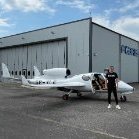
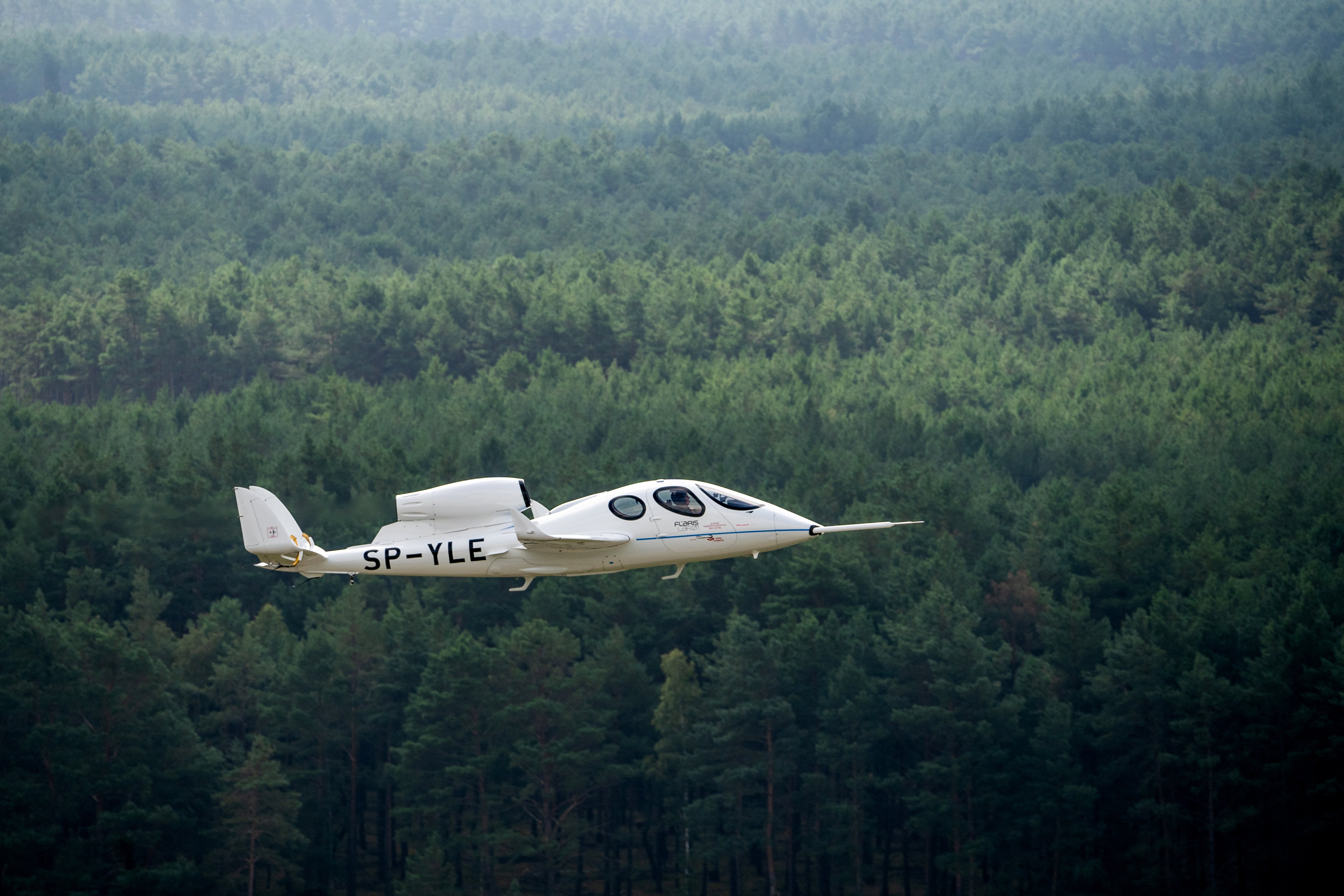
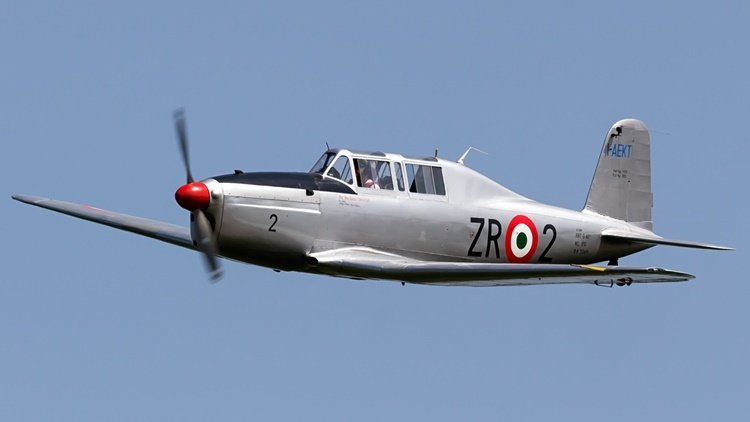
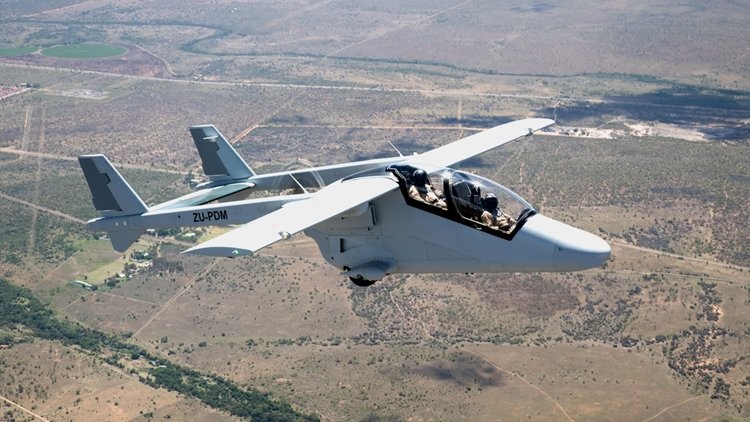
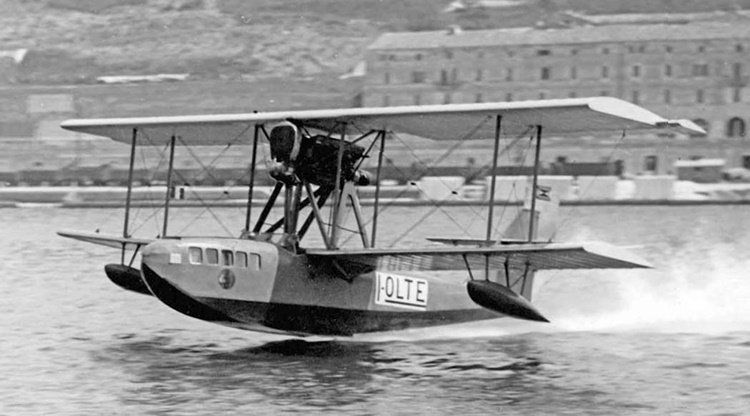
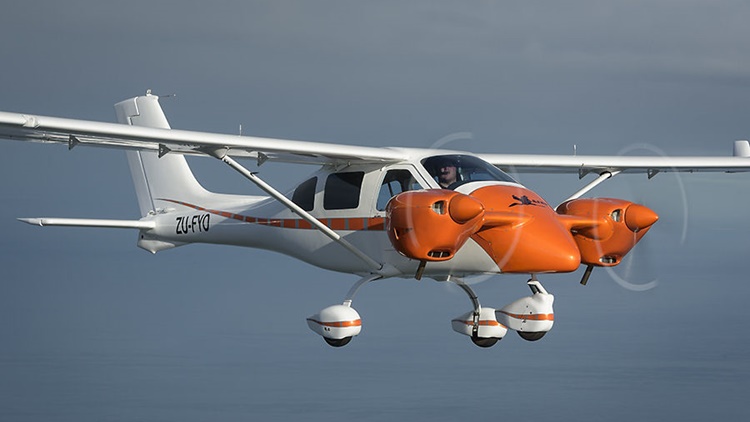
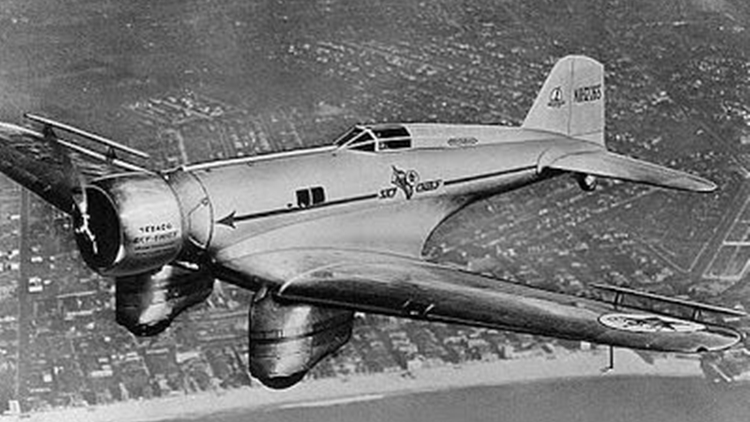
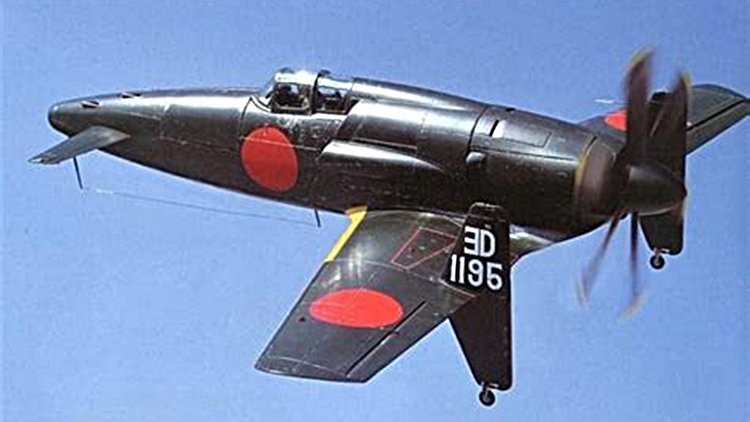
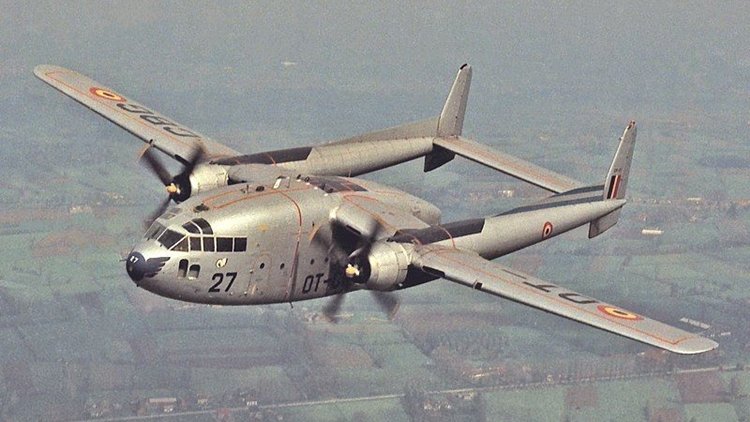
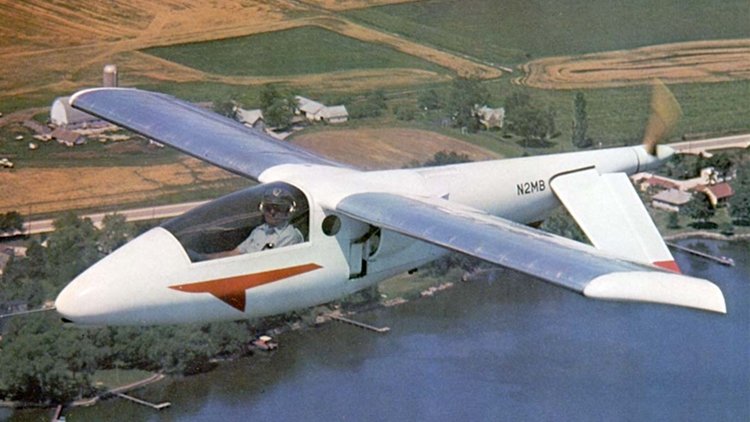
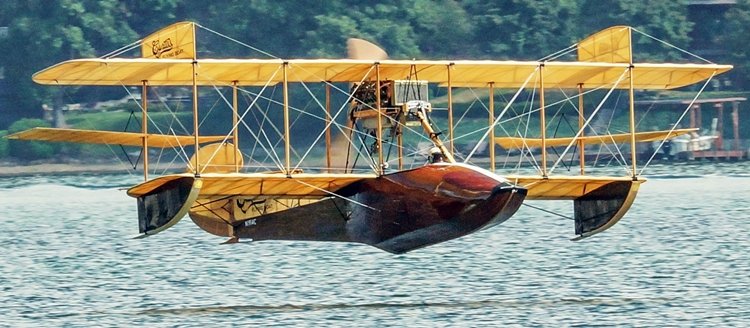
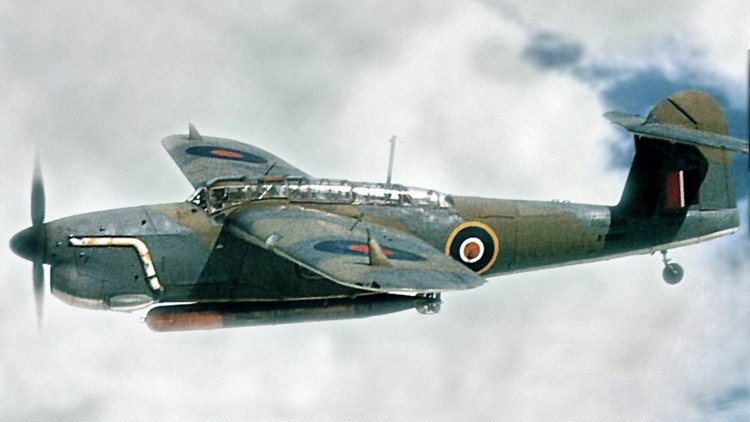
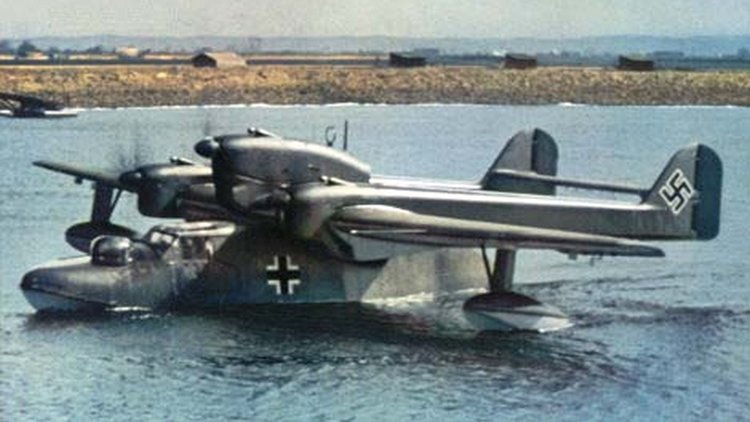

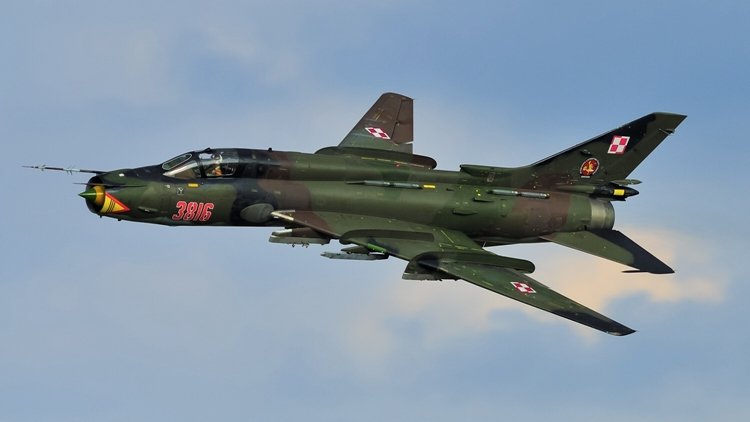
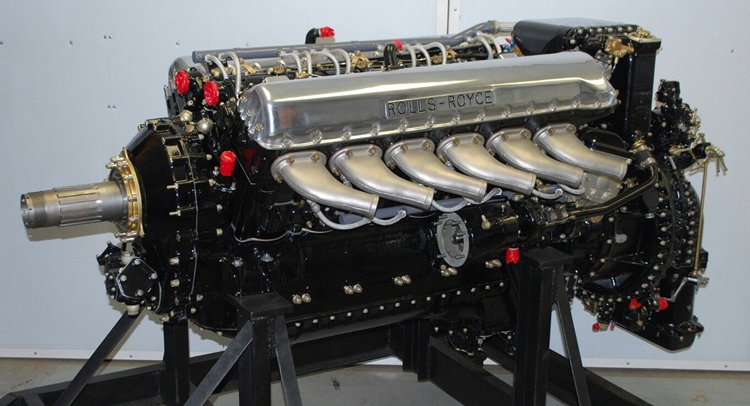
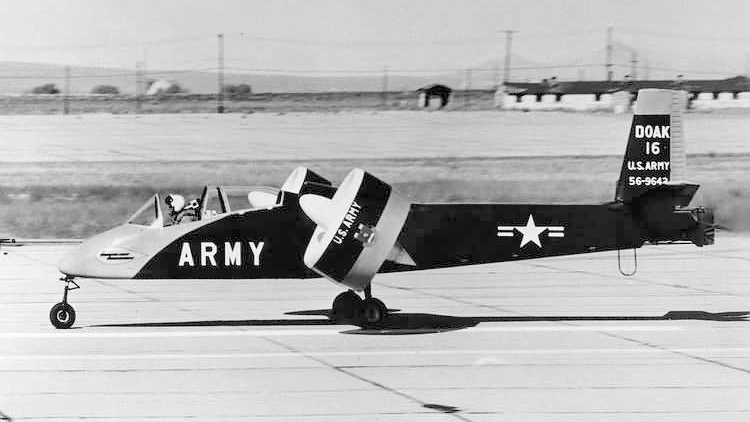
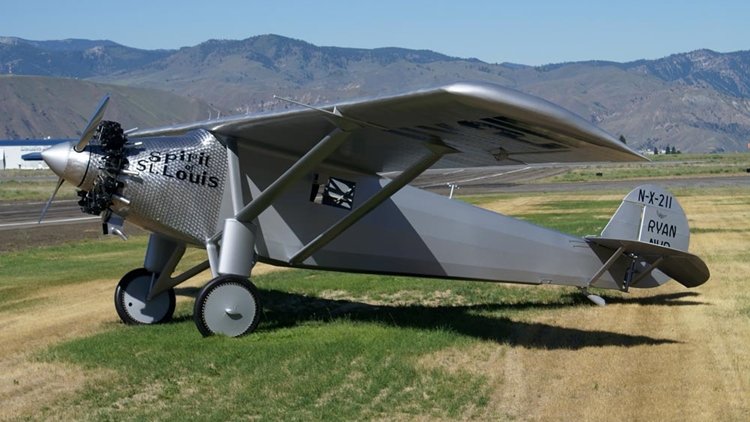
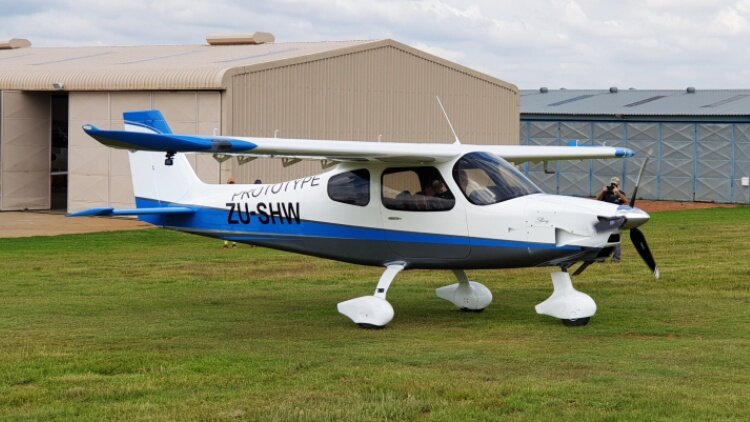
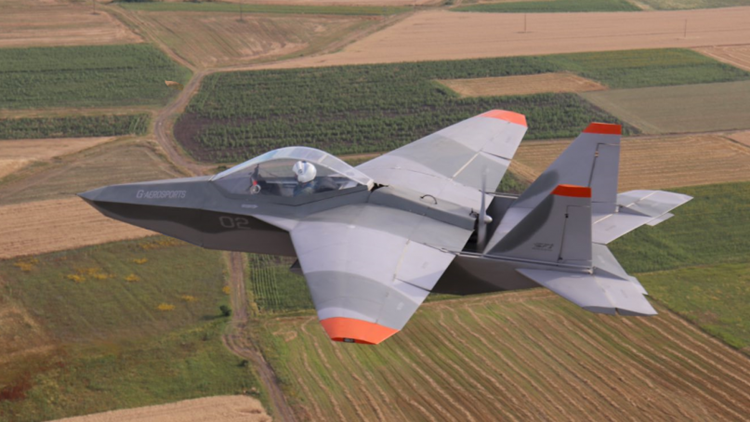
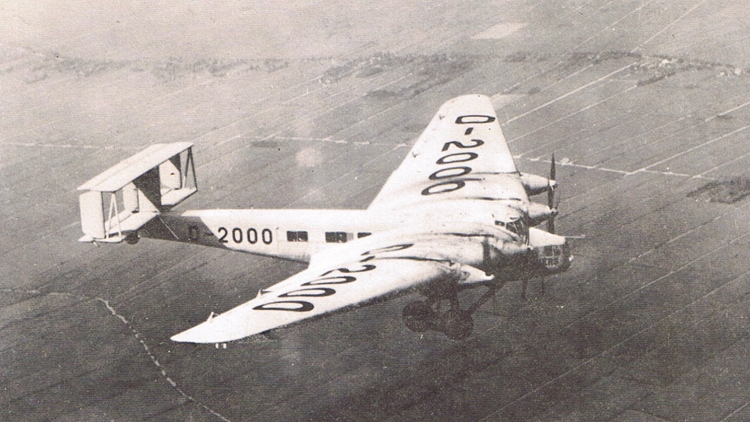
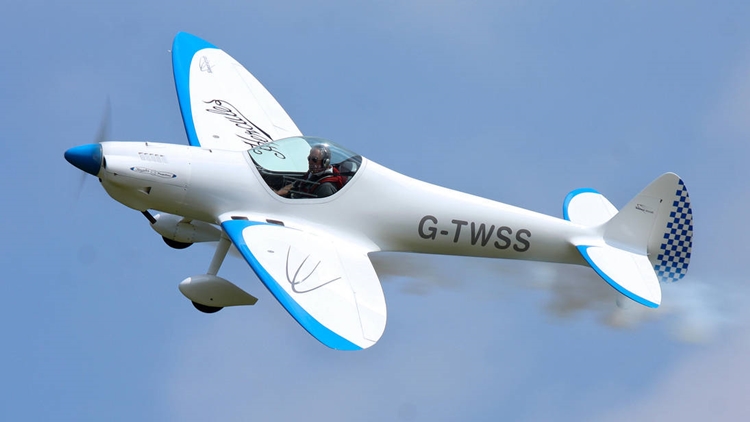
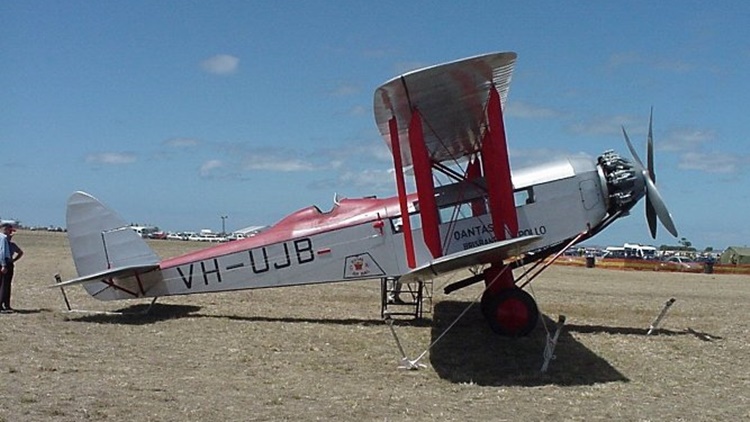
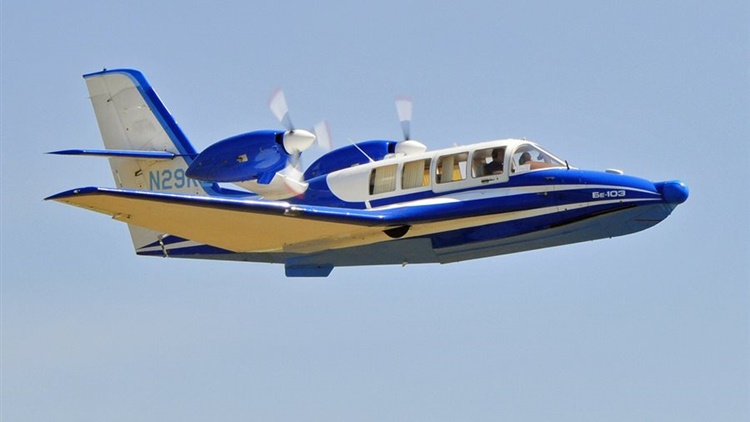
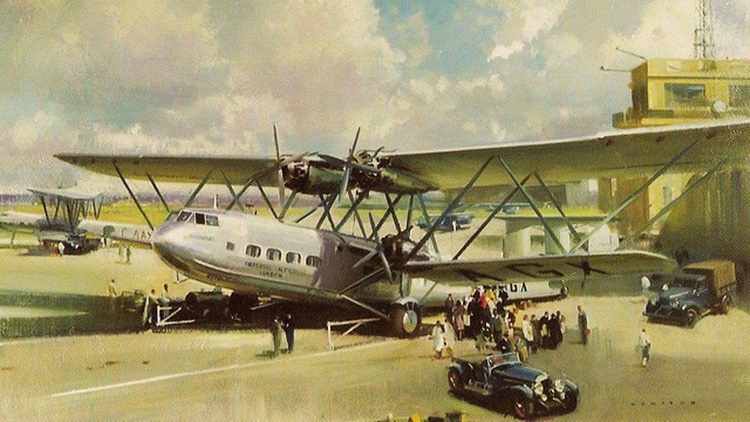
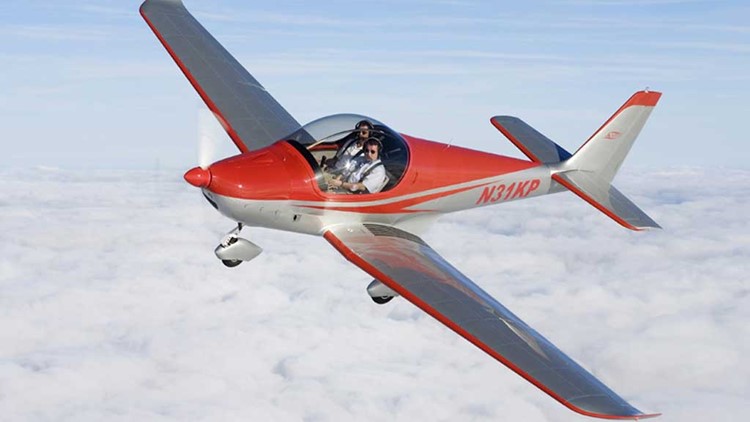
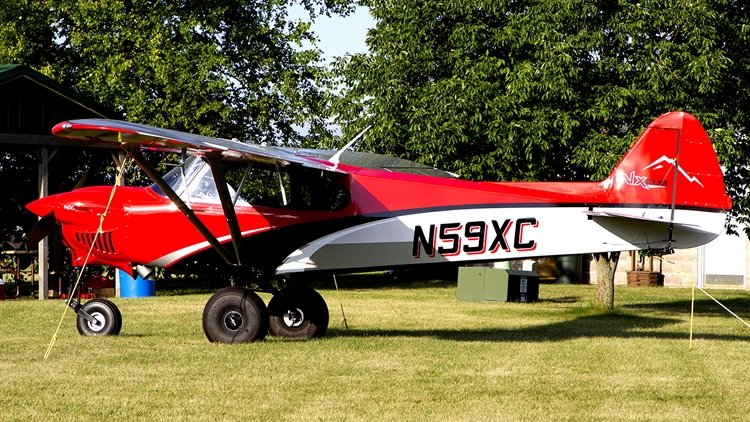

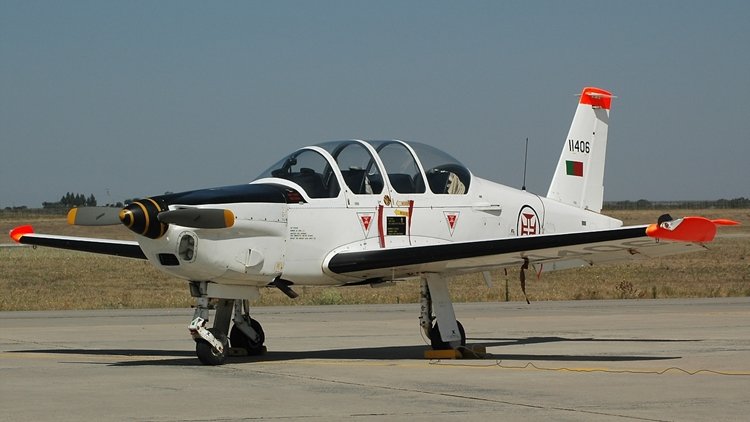
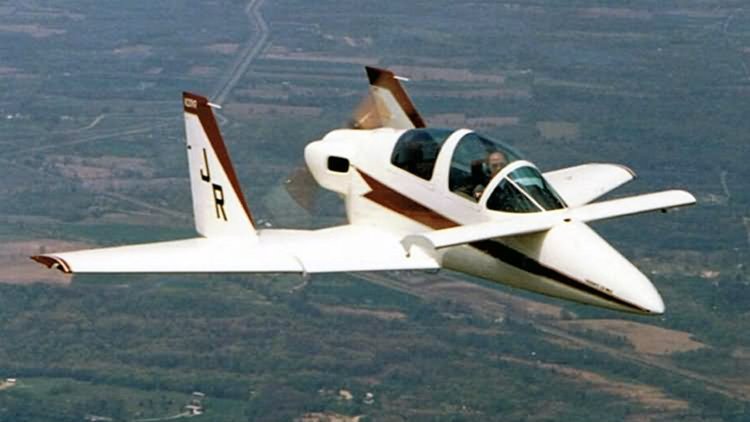
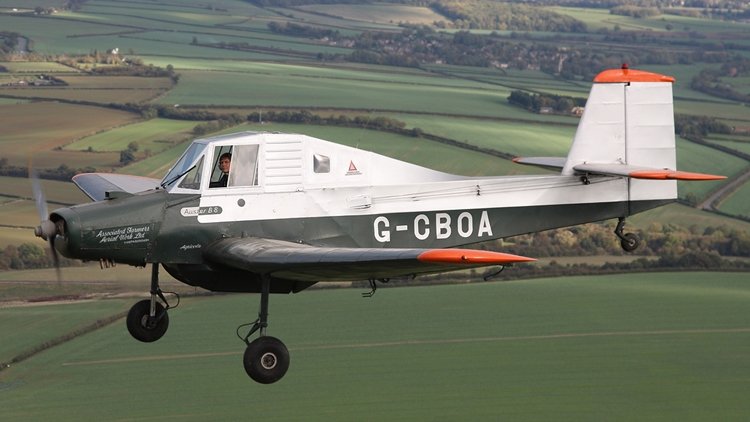
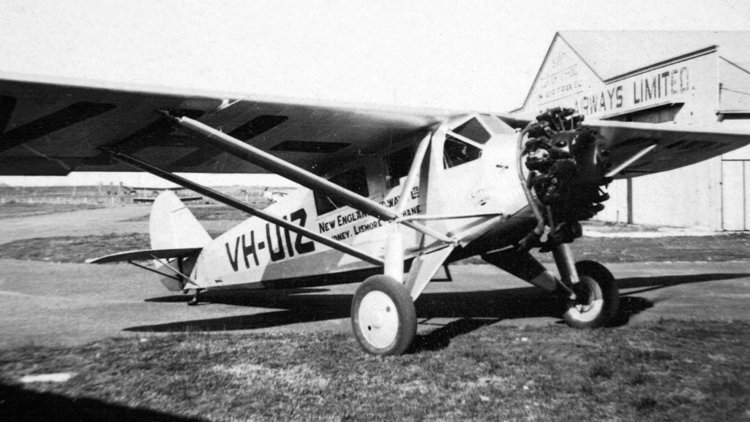
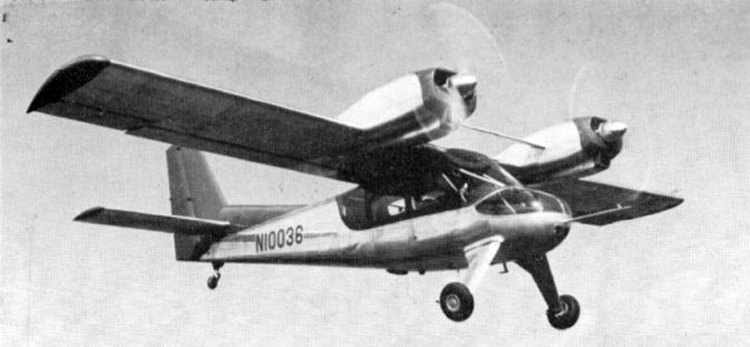
01.jpg.a34cd2b8c27e97e596776f027333a502.jpg)
